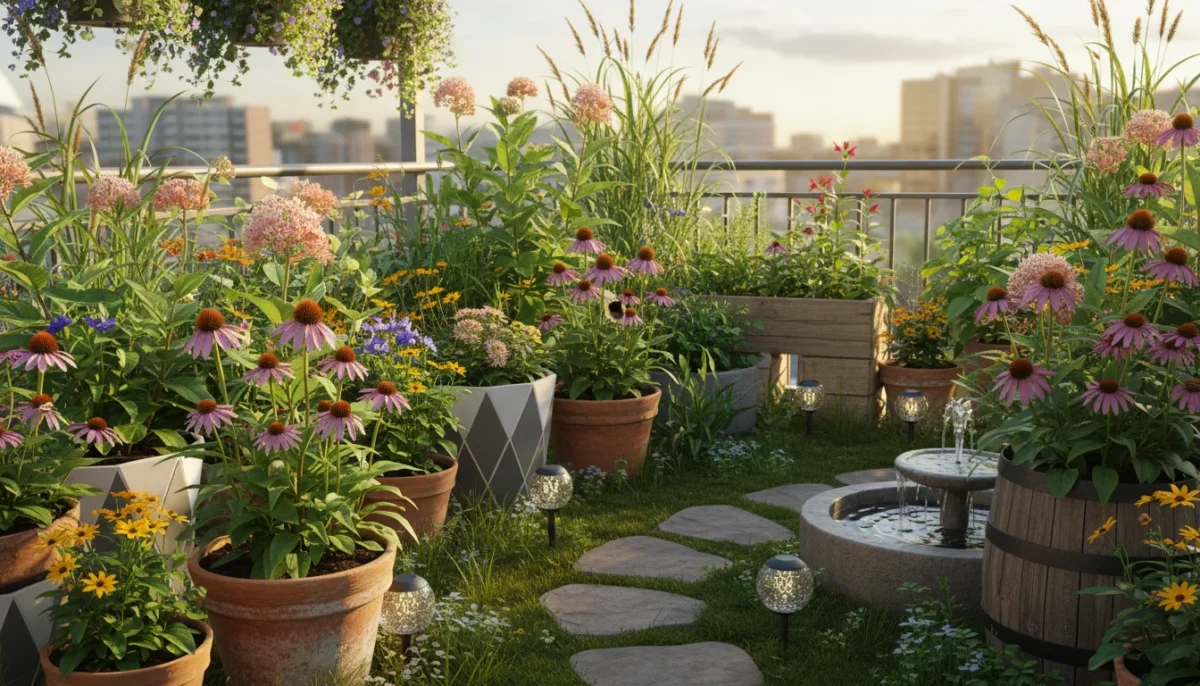Your urban balcony, patio, or compact yard offers more than just a small patch of green. It represents a vital opportunity to foster biodiversity, conserve resources, and reconnect with nature right where you live. Many urban gardeners aspire to create spaces that are both beautiful and beneficial to the environment. This means embracing sustainable gardening practices that minimize waste, conserve water, and support local ecosystems.
This guide will show you how integrating native plants into your small-space garden transforms it into a thriving habitat. We will explore the compelling reasons to choose native plants, provide practical steps for selecting and caring for them, and offer actionable advice on how to build an eco-friendly garden that benefits both your community and the planet. Discover how native plants urban gardening offers a powerful solution for greener living, even in the smallest spaces.
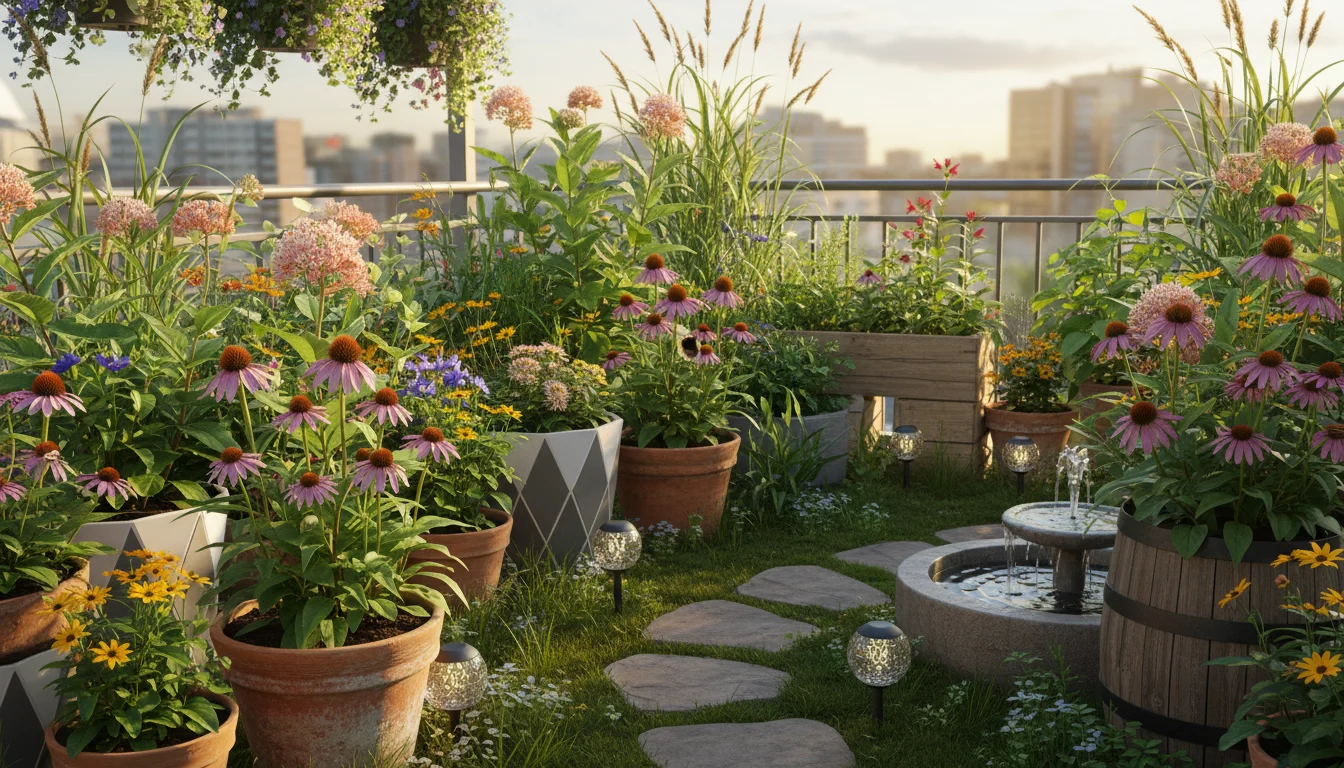
Why Choose Native Plants for Your Urban Garden?
Opting for native plants in your small garden delivers a cascade of benefits, making it a cornerstone of sustainable gardening. These are plants that grow naturally in your local region, evolving alongside your climate, soil, and wildlife. By choosing them, you tap into an inherent resilience and efficiency that non-native species often lack.
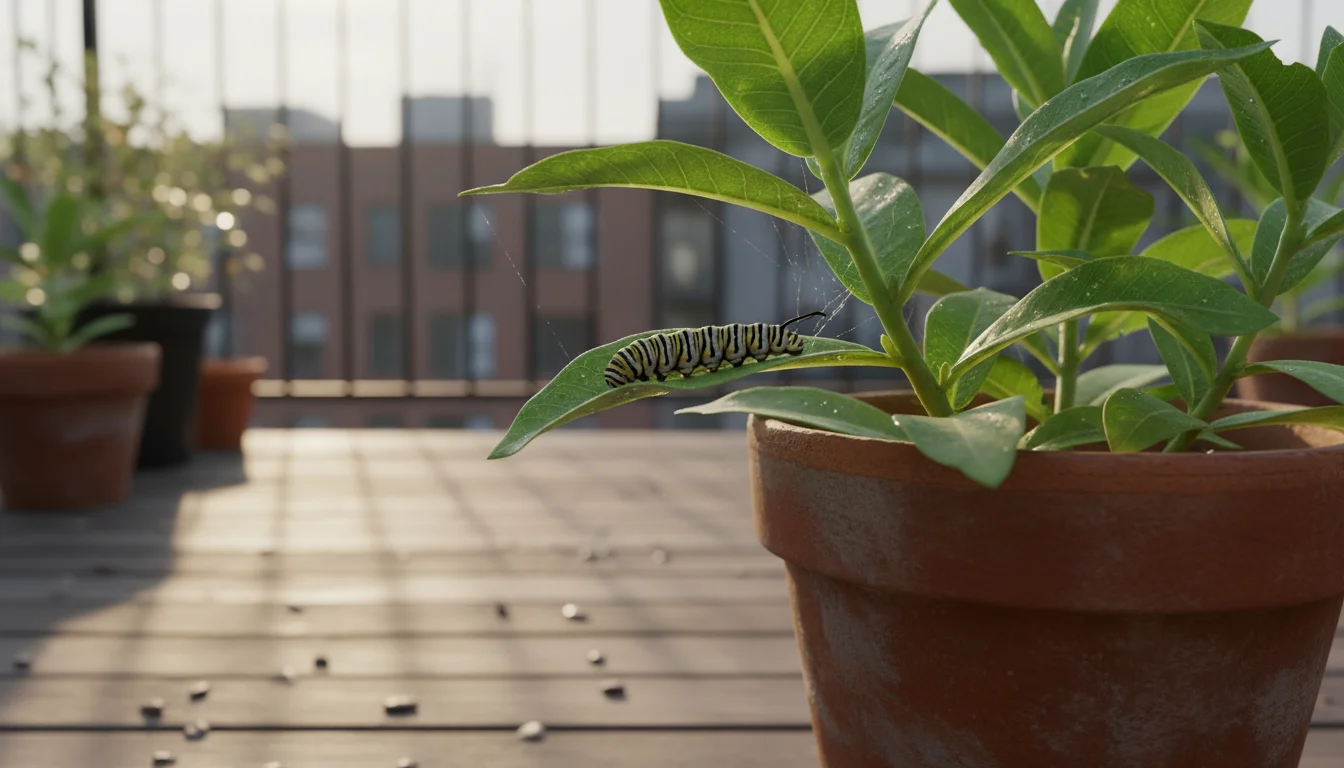
Ecological Impact: A Thriving Local Ecosystem
Native plants form the foundation of local food webs. They provide essential food, shelter, and breeding grounds for a wide array of insects, birds, and other small animals. For instance, specific native plants serve as host plants for butterfly and moth larvae. Monarch butterflies, for example, rely exclusively on various milkweed species (Asclepias spp.) for their caterpillars. Without milkweed, monarch populations decline drastically. Research from the University of Delaware found that gardens with a higher percentage of native plants support significantly more insect biomass, which in turn feeds local bird populations. A single oak tree, a common native species in many regions, can host over 500 species of caterpillars.
The decline in pollinator populations is a critical environmental concern. Bees, butterflies, and other pollinators are responsible for pollinating roughly 75% of the world’s flowering plants and about 35% of the world’s food crops. Native plants supply the precise nectar, pollen, and habitat these crucial creatures require for survival. Creating an eco-friendly garden with native species directly counters this decline, turning your urban space into a vital refueling station and nursery.
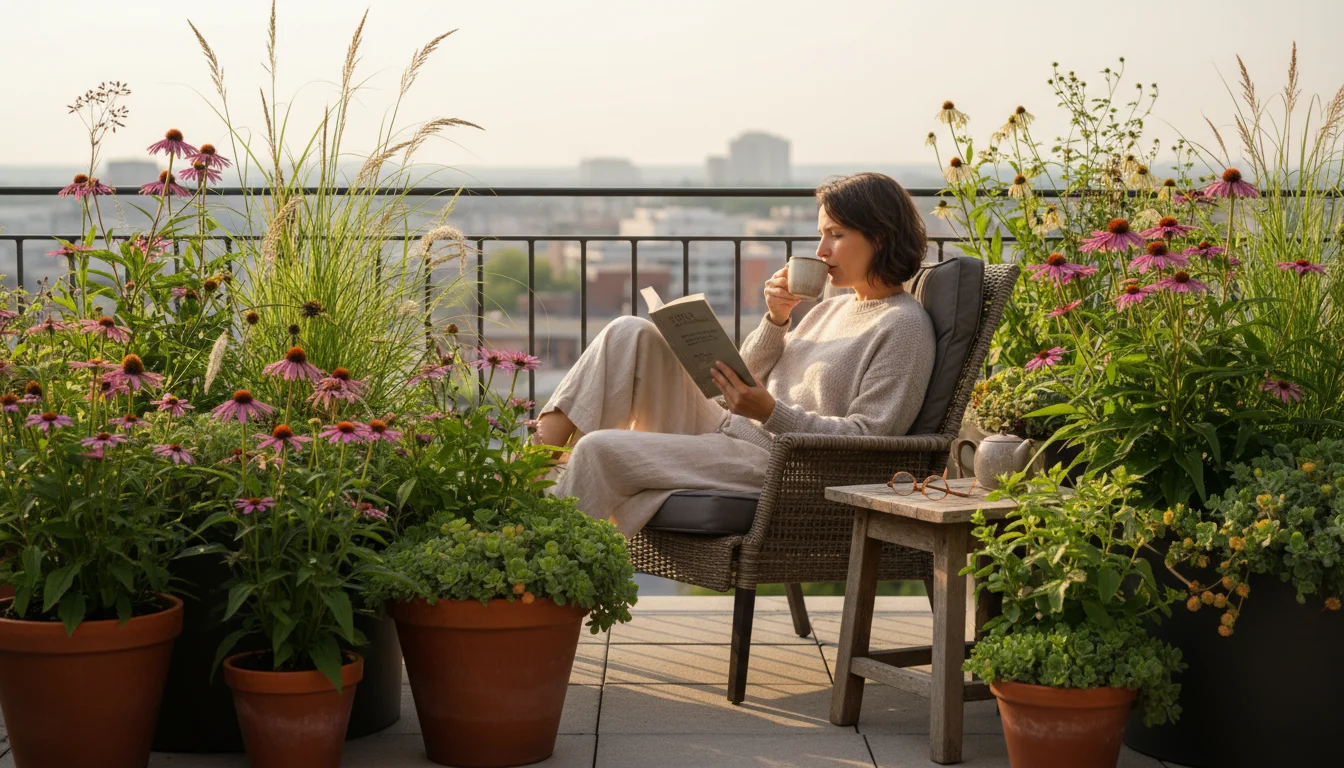
Low Maintenance: Less Work, More Enjoyment
Because native plants naturally adapt to your local conditions, they require less intervention from you. They withstand regional weather patterns better, whether it is periods of drought, heavy rain, or temperature fluctuations. You spend less time on tasks like watering, fertilizing, and pest control. For example, a study by the Lady Bird Johnson Wildflower Center showed that native landscapes require up to 80% less water than traditional lawns and gardens once established. This translates into significant water savings for you and reduced demands on municipal water supplies.
Native plants also rarely need chemical fertilizers. They thrive in the existing soil conditions, often benefiting from the natural nutrient cycles without external amendments. This eliminates the environmental impact associated with fertilizer production and runoff, which can pollute local waterways. You also reduce exposure to synthetic chemicals in your garden space, creating a healthier environment for your family and pets.
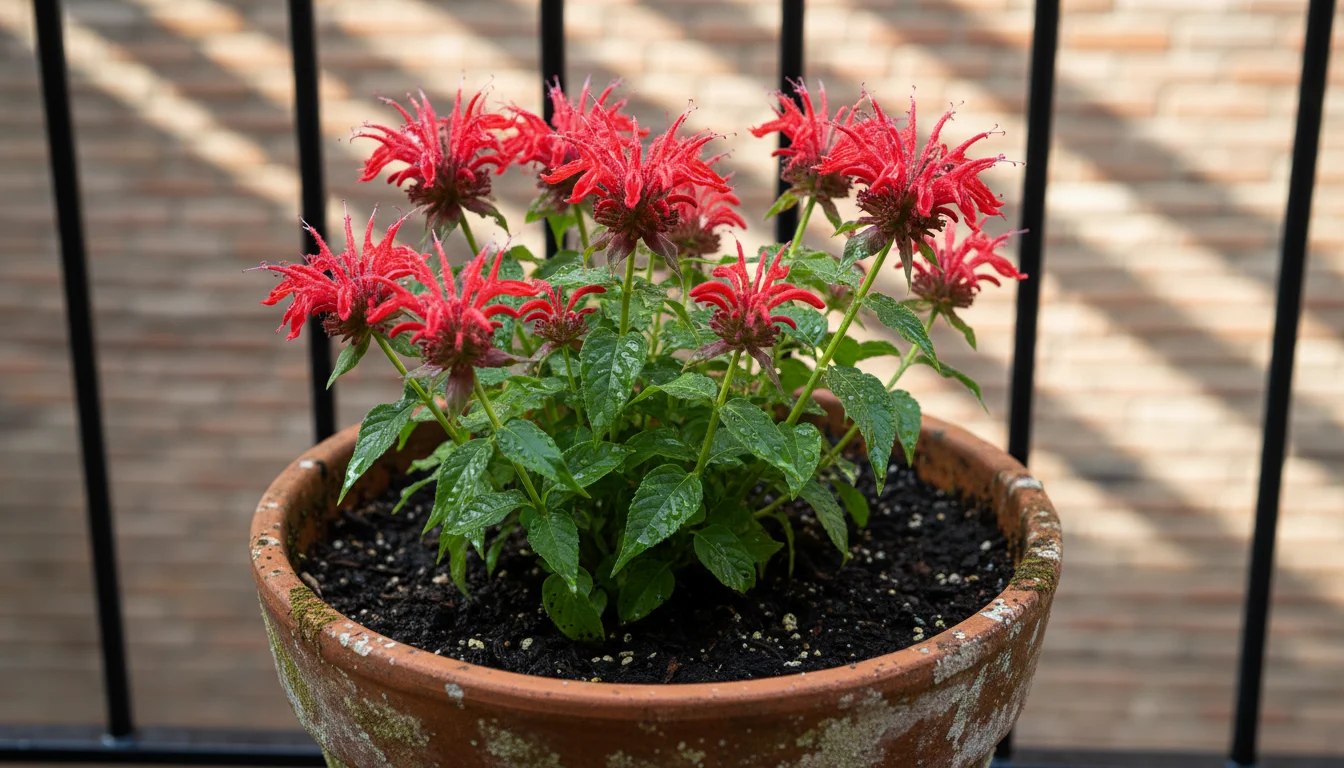
Climate Resilience: Adapting to Change
As urban areas face increasing challenges from extreme weather events, native plants offer a degree of resilience that imported species cannot match. Their deep root systems improve soil structure, enhancing water infiltration during heavy rains and increasing drought tolerance. These robust root systems also help prevent soil erosion in containers and raised beds. This inherent hardiness means your garden fares better during heatwaves or unexpected cold snaps, contributing to overall urban climate resilience. You create a garden that is not only beautiful but also robust in the face of a changing climate.
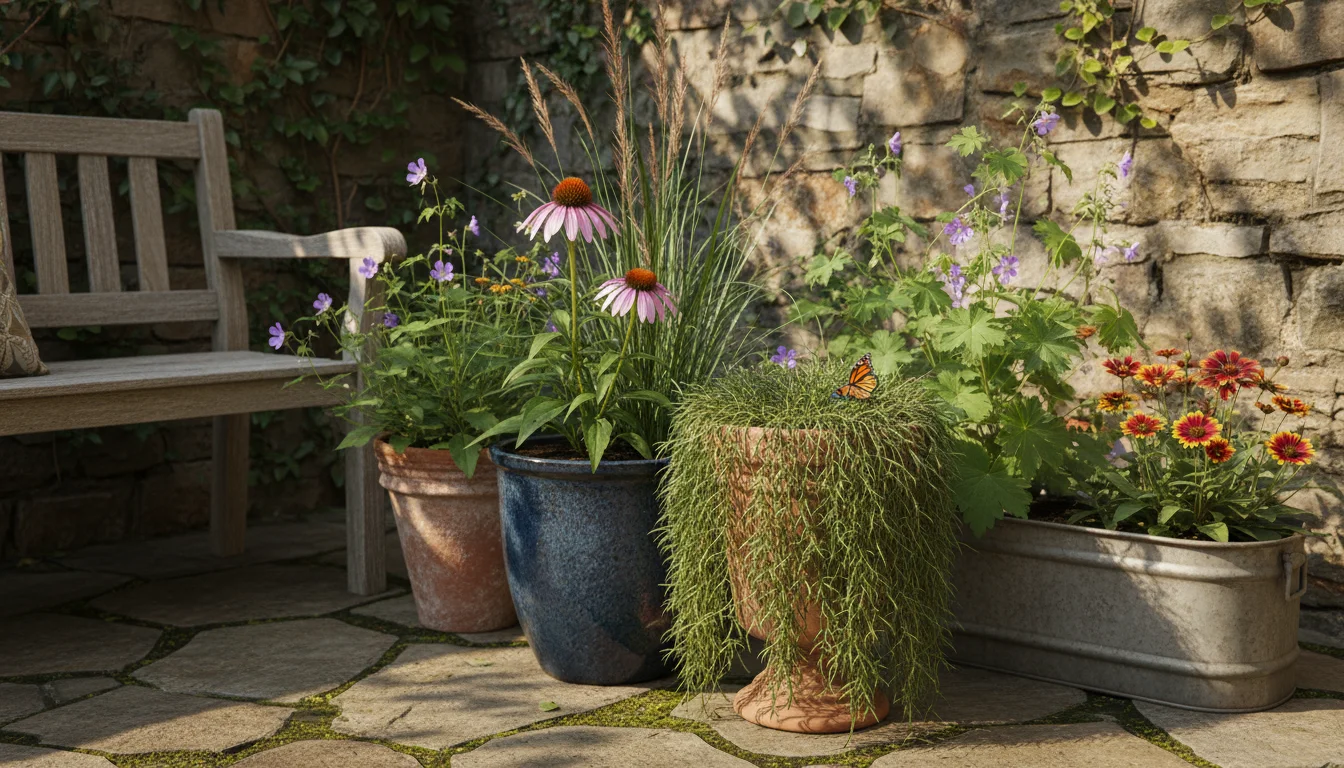
Aesthetic Appeal and Regional Identity
Native plants offer a unique beauty that reflects your region’s natural heritage. They provide a sense of place, connecting your garden to the broader landscape. From vibrant wildflowers to graceful grasses and sturdy shrubs, native options offer diverse textures, colors, and forms. Many bloom sequentially, ensuring continuous interest and a steady food supply for pollinators throughout the growing season. Your eco-friendly garden becomes a living tapestry, showcasing the distinctive flora of your local area and providing continuous visual delight.
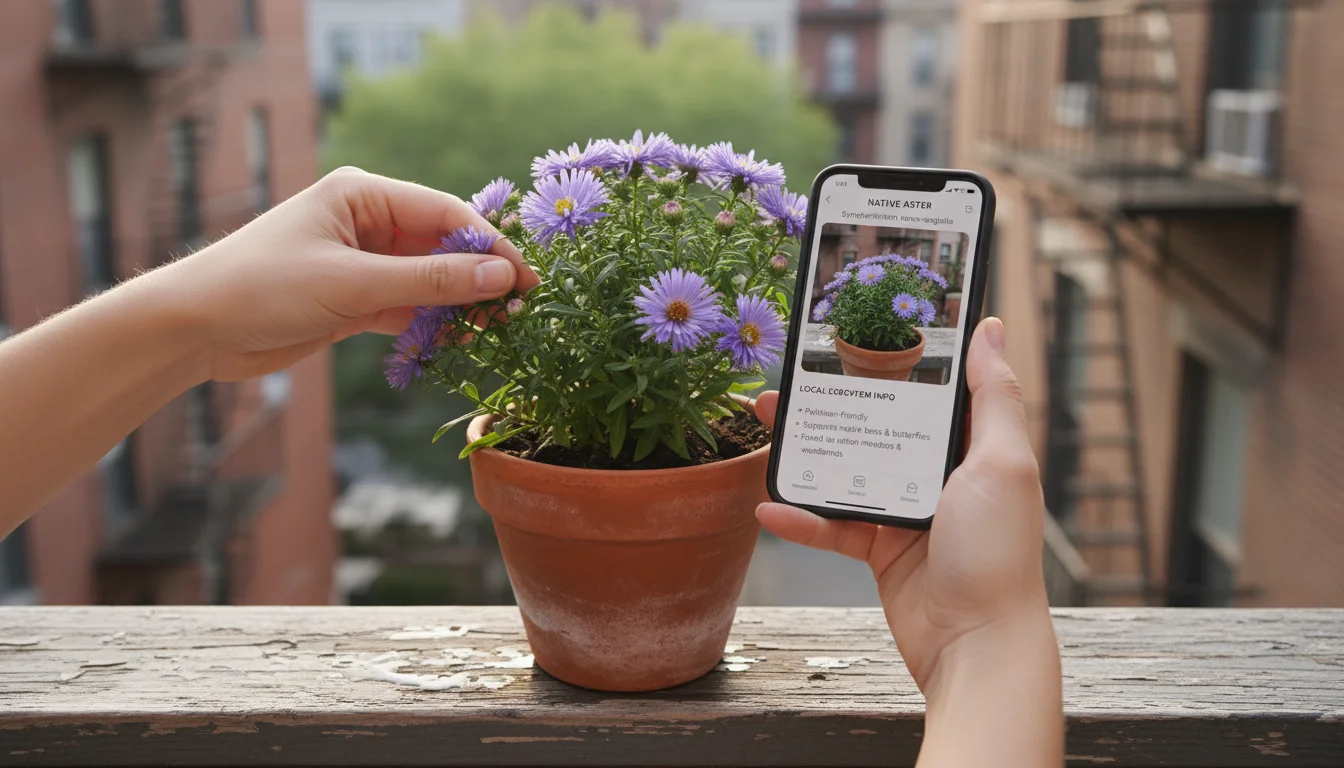
Understanding Your Local Ecosystem: The First Step
Building a successful native plant urban garden begins with understanding your specific local environment. Choosing the right native plants requires knowing what thrives naturally in your area. This involves looking beyond generalized advice and focusing on your regional specifics.
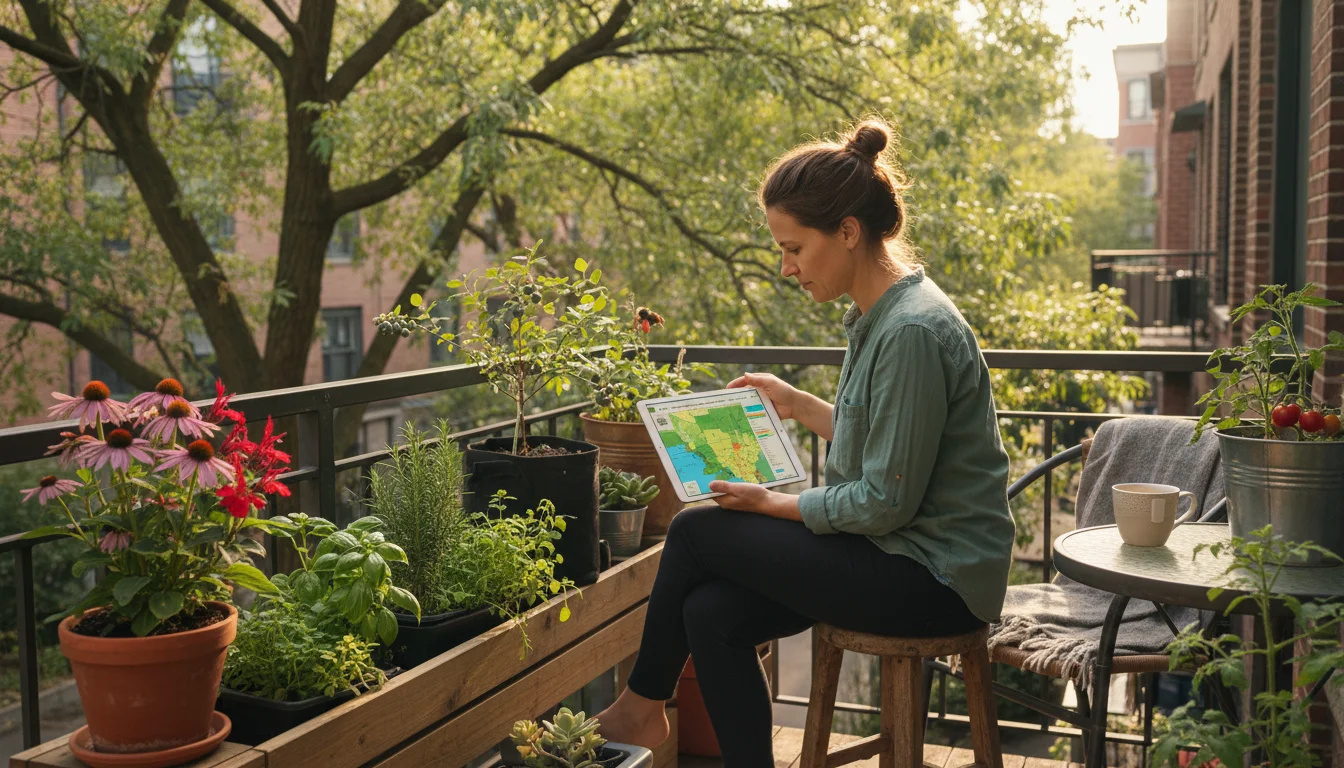
Identify Your Hardiness Zone and Ecoregion
First, pinpoint your USDA Plant Hardiness Zone. This zone tells you the average annual extreme minimum winter temperature for your location. You can easily find this information online. While the hardiness zone helps determine if a plant can survive your winters, it only tells part of the story. For native plants, you also want to consider your ecoregion.
An ecoregion is a larger geographic area defined by its shared climate, geology, hydrology, and vegetation. Understanding your ecoregion helps you choose plants adapted to your specific soil types, rainfall patterns, and pest pressures. For example, a plant native to a dry prairie ecoregion will behave very differently in a humid forest ecoregion, even if they are in the same hardiness zone. You can often find resources from your state’s native plant society or local cooperative extension office that detail native plants specific to your ecoregion.
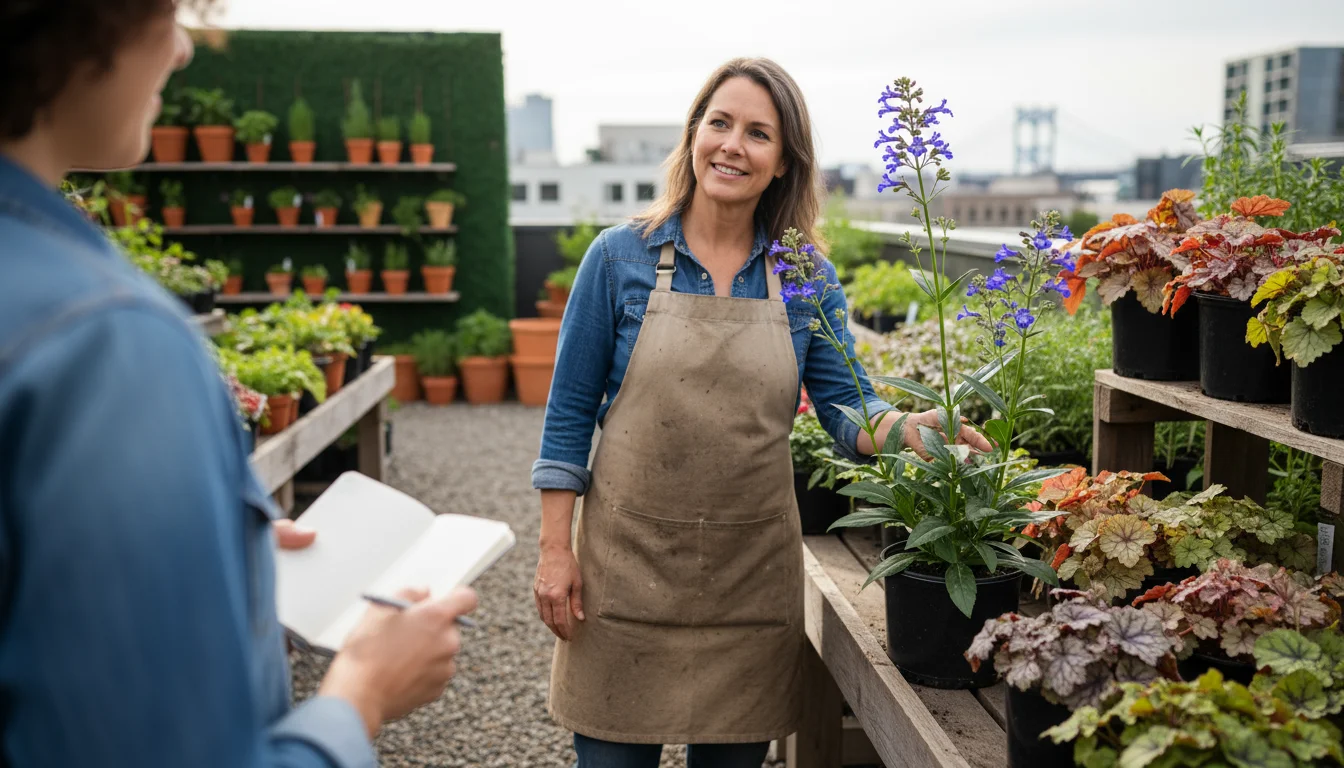
Connect with Local Resources
Local nurseries specializing in native plants, botanical gardens, and university extension programs are invaluable resources. These experts understand the nuances of local ecosystems and can guide you toward appropriate selections for your specific urban microclimate. Many offer plant lists tailored to different light conditions, soil types, and moisture levels common in urban settings. They can also advise on sourcing plants that are genetically appropriate for your region, ensuring the greatest ecological benefit.
Be wary of plants labeled simply “native” without further qualification. A plant might be native to your country but not to your specific state or ecoregion. Always seek out plants that are truly native to your local area. This ensures you select plants that are best adapted and provide the most robust ecological support for your specific urban ecosystem. You also avoid inadvertently introducing potentially aggressive or less beneficial species.
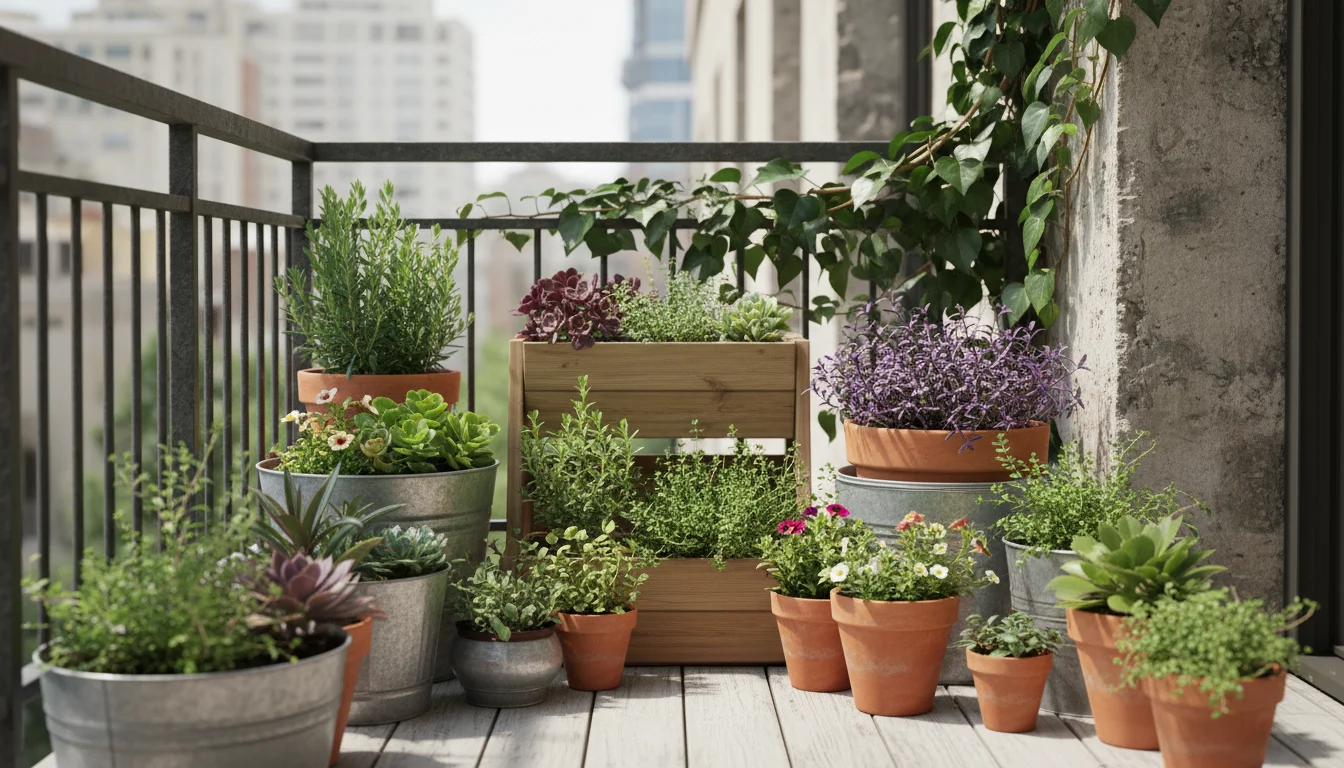
Avoiding Invasive Species
When selecting plants, it is crucial to avoid invasive species. These are non-native plants that aggressively spread, outcompeting native flora and disrupting local ecosystems. Common examples include English Ivy, Vinca, and Bradford Pear in many parts of North America. These plants can quickly escape cultivation, spreading into natural areas and causing significant ecological harm. Always cross-reference your plant choices with lists of invasive species for your region, often available through state natural resource departments or native plant societies. You ensure your eco-friendly garden does no harm to the surrounding environment.
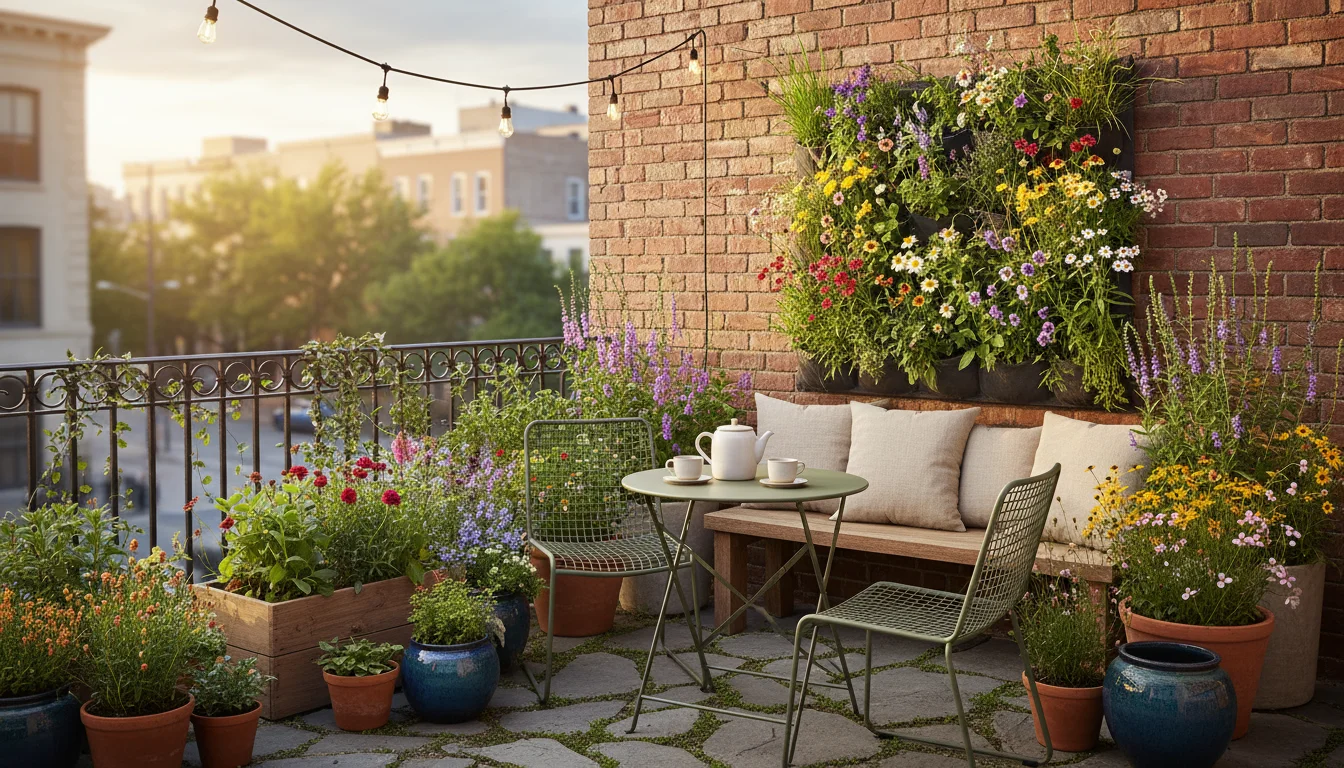
Designing a Thriving Native Space in Small Areas
Transforming a small balcony, patio, or compact yard into a vibrant native plant oasis is entirely achievable with thoughtful design. You can create significant ecological impact even in limited square footage. The key lies in strategic planning and maximizing your available space.
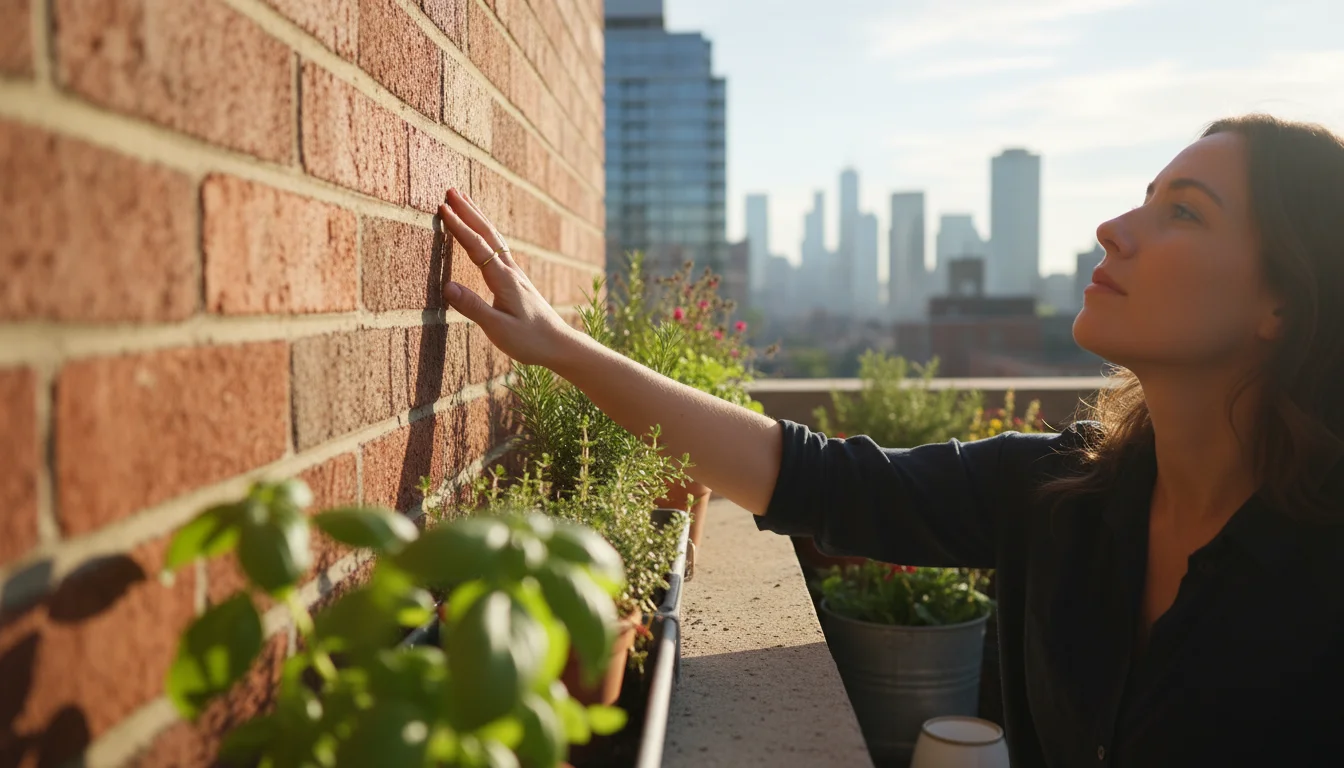
Assess Your Site Conditions
Before buying any plants, understand your site’s specific conditions. Observe how much sun your area receives throughout the day. Is it full sun (6+ hours), partial sun (3-6 hours), or shade (less than 3 hours)? Note any prevailing winds, which can be amplified on balconies, and how rainfall affects your containers or ground. Consider factors like heat reflection from concrete or brick walls, which create a warmer microclimate. You empower yourself to choose plants that will truly thrive.
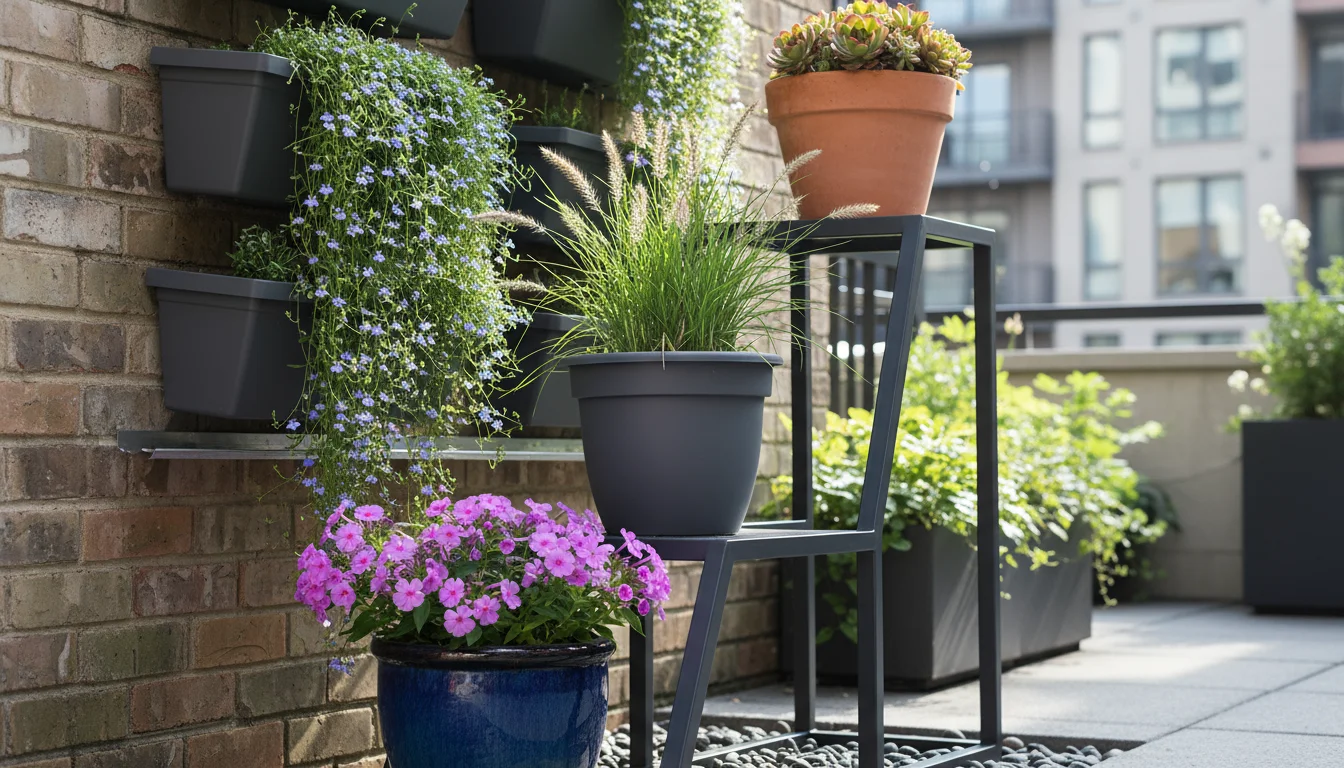
Container Choices and Placement
For urban gardeners, containers are often the primary planting medium. Choose pots that are appropriately sized for the mature plant. Larger containers hold more soil, offer better insulation for roots, and retain moisture longer. Materials like terracotta can dry out quickly, while plastic or glazed ceramic retain moisture more effectively. Consider self-watering containers for reduced maintenance, especially during warmer months. Ensure all containers have adequate drainage holes to prevent waterlogging, which can harm native plant roots. You select containers that best support your plants’ needs.
When arranging containers, think vertically. Tiered plant stands, hanging baskets, and wall planters allow you to cultivate more plants in a compact footprint. Cluster containers to create mini-ecosystems. This not only looks aesthetically pleasing but also creates microclimates that reduce evaporation and provide shelter for beneficial insects. You maximize your planting area without expanding its physical footprint.
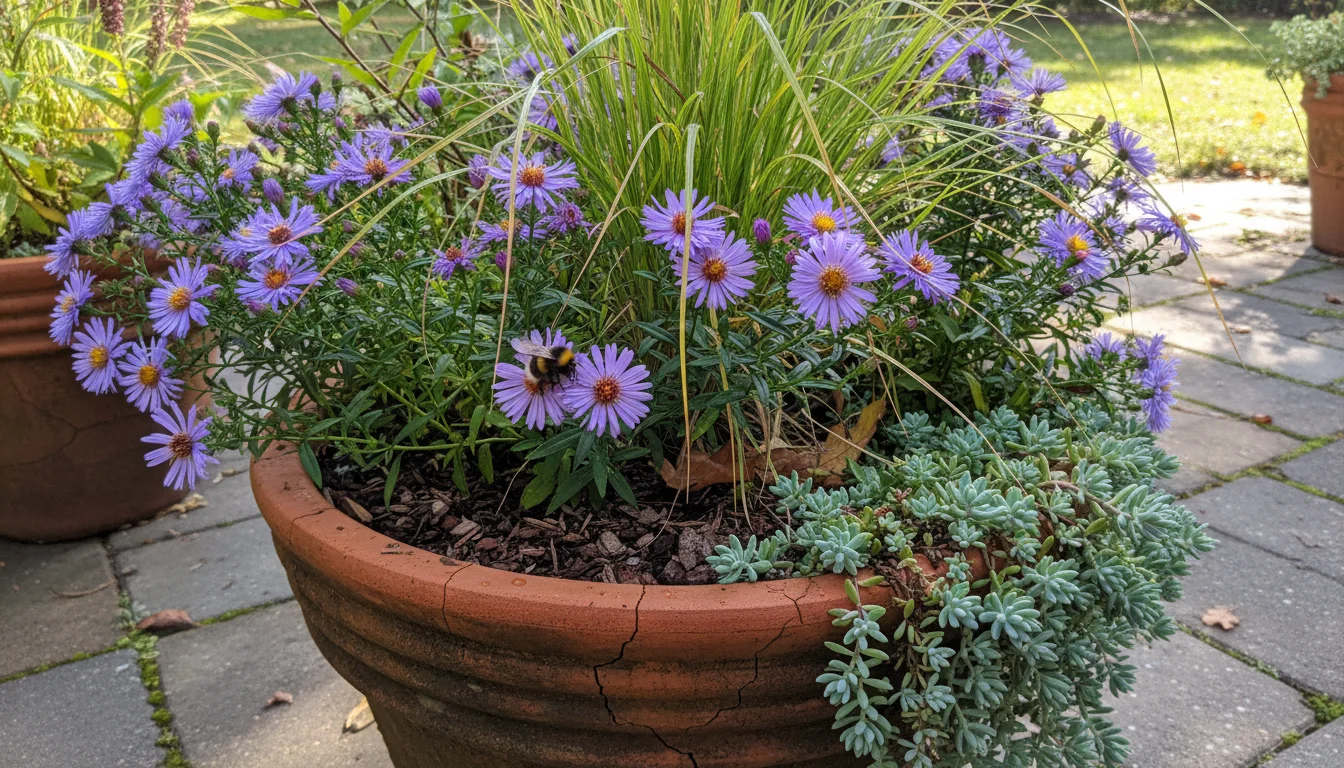
Layering for Biodiversity
Even in small spaces, you can mimic natural plant communities by layering different plant heights. This layering strategy provides diverse habitats and visual interest. Start with taller plants in the back or center, such as native grasses or small shrubs. Add mid-height perennials and then groundcovers or trailing plants around the edges. This creates visual depth and provides different niches for various pollinators and beneficial insects.
For example, in a large container, you might plant a native aster (mid-height) with a shorter native sedum (groundcover) and a small native grass (tall accent). This approach boosts biodiversity and enhances the aesthetic appeal of your eco-friendly garden. The complex structure provides more hiding places and food sources for wildlife.
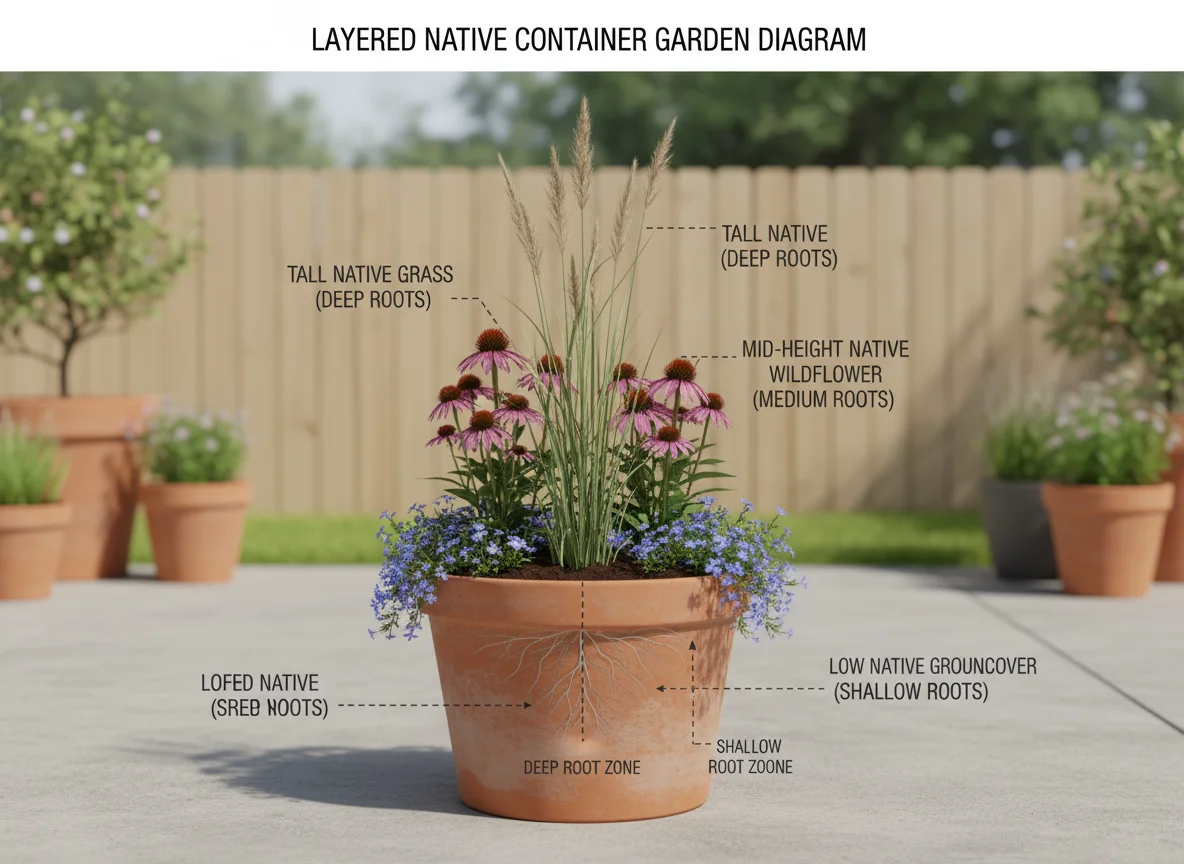
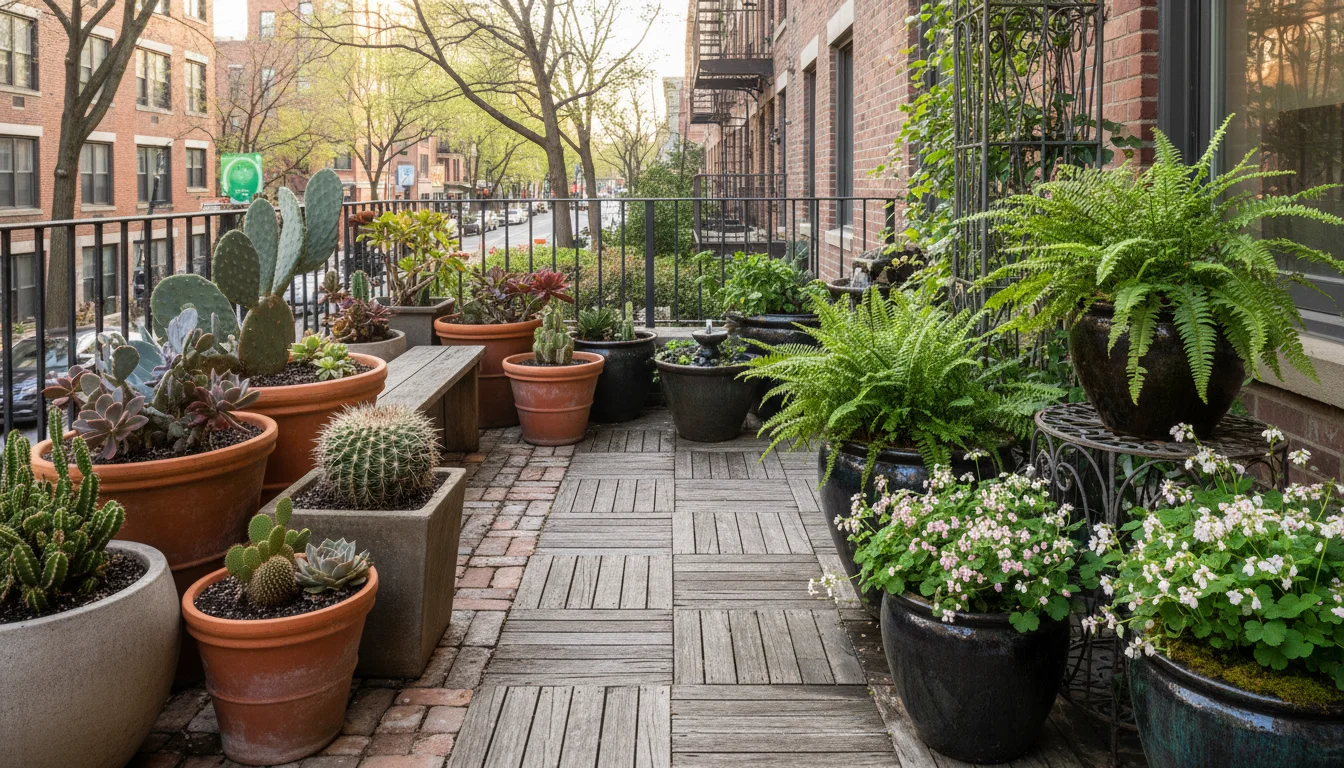
Strategic Plant Grouping
Group plants with similar light and water requirements together. This simplifies watering and maintenance. For instance, drought-tolerant native succulents and cacti thrive in sunny, well-drained containers, while native ferns and foamflowers prefer shadier, moister conditions. By matching plants to their preferred conditions, you reduce plant stress and create a more harmonious, low-maintenance garden. This strategic grouping allows each plant to flourish optimally, leading to a healthier, more vibrant display.
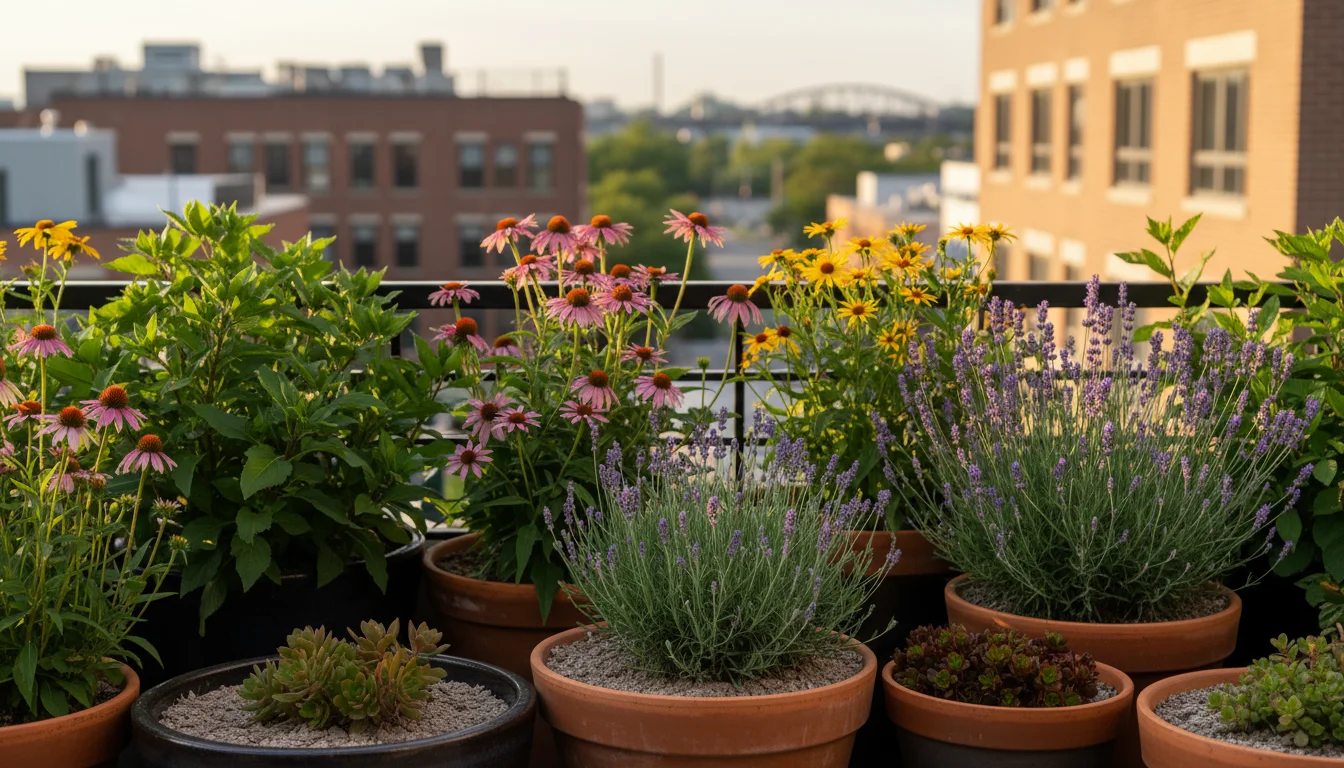
Water-Wise Practices for Native Plant Gardens
One of the most compelling advantages of choosing native plants for your urban garden is their inherent water efficiency. Once established, many native species require significantly less water than their non-native counterparts, making them a cornerstone of sustainable gardening. You achieve a beautiful garden while conserving a precious resource.
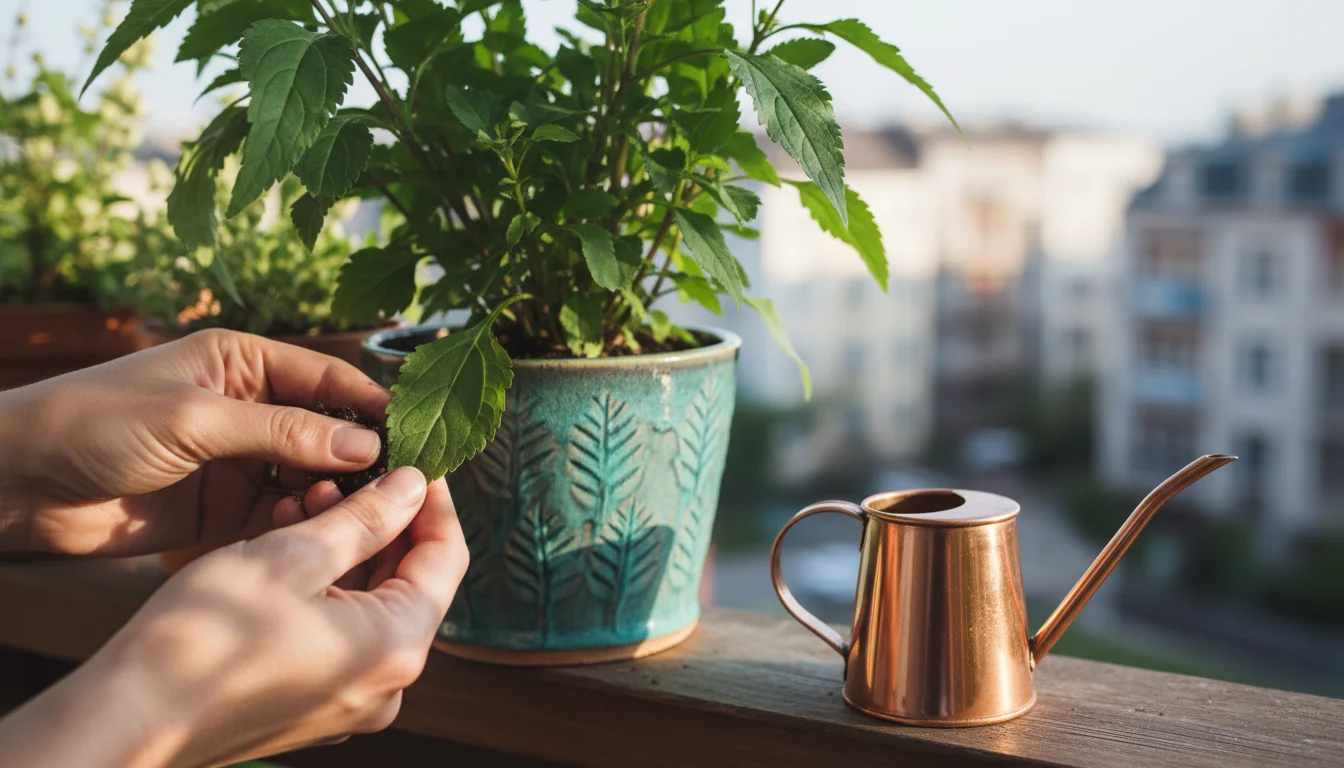
Understand Native Plant Water Needs
While native plants are generally drought-tolerant, they still need consistent watering during their establishment phase, typically the first growing season. After this, their robust root systems allow them to tap into deeper soil moisture and withstand dry spells. Monitor your plants closely. Wilting leaves are a clear sign of thirst, but overwatering can be equally detrimental, leading to root rot. You learn to read your plants’ signals, ensuring they receive just the right amount of water.
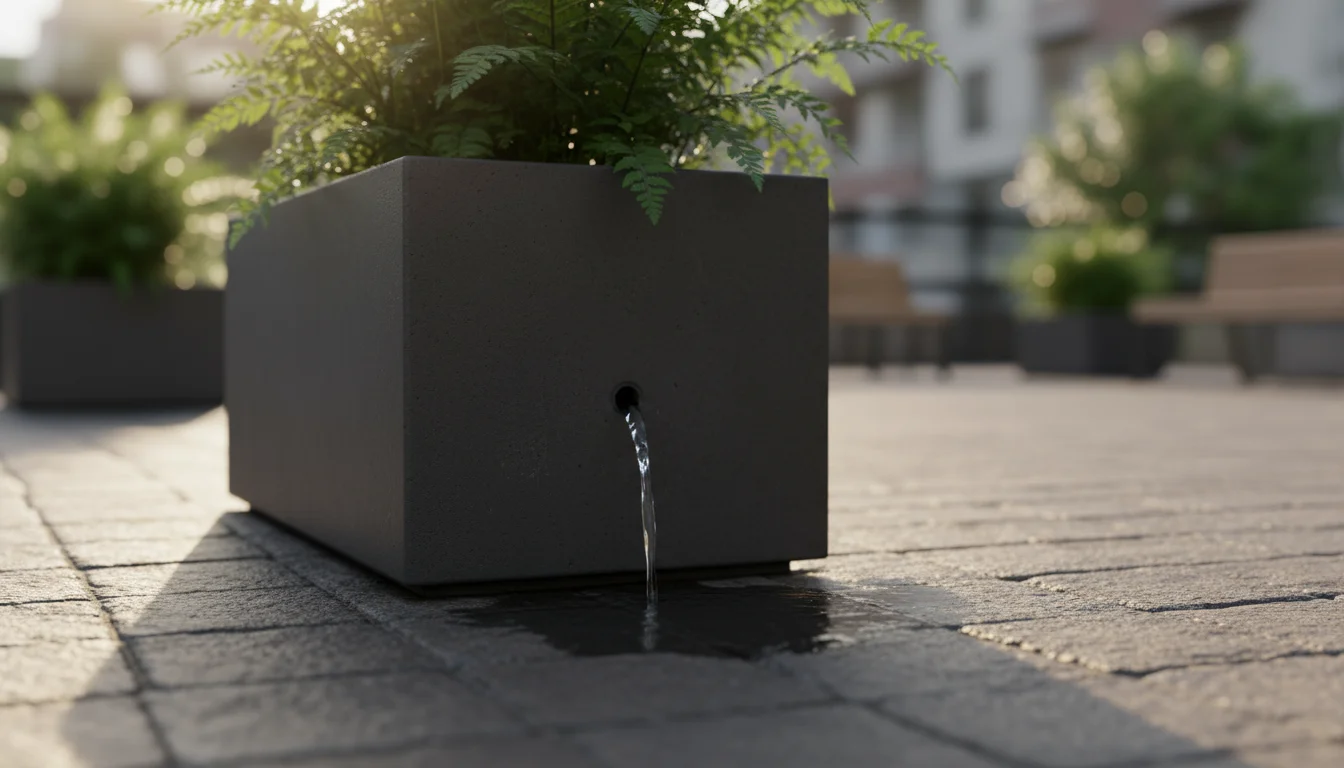
Deep and Infrequent Watering
Instead of frequent shallow sprinklings, practice deep and infrequent watering. This encourages native plants to develop those strong, deep root systems. Water thoroughly until moisture drains from the bottom of your containers or penetrates deep into the soil of your garden bed. Then, allow the top few inches of soil to dry out before watering again. You can check soil moisture by sticking your finger into the soil. This method trains plants to seek water deeper down, making them more resilient during dry periods.
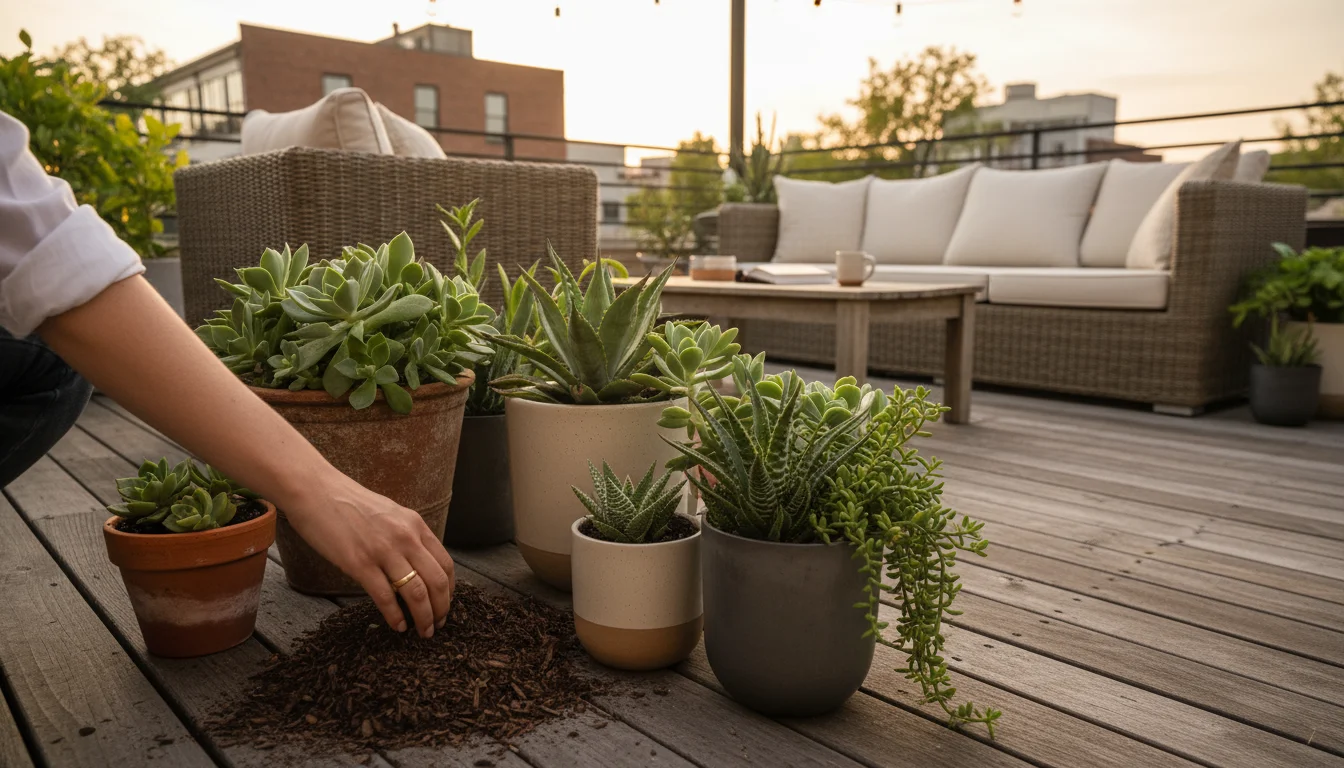
The Power of Mulch
Mulching is a simple yet incredibly effective water-saving technique. Apply a 2-4 inch layer of organic mulch, such as shredded bark, wood chips, or compost, around the base of your plants in containers and garden beds. Keep the mulch a few inches away from plant stems to prevent rot. Mulch suppresses weeds, which compete for water and nutrients. Crucially, it significantly reduces soil moisture evaporation, meaning you water less often. Mulch also helps regulate soil temperature, keeping roots cooler in summer and warmer in winter. You conserve water and improve soil health simultaneously.
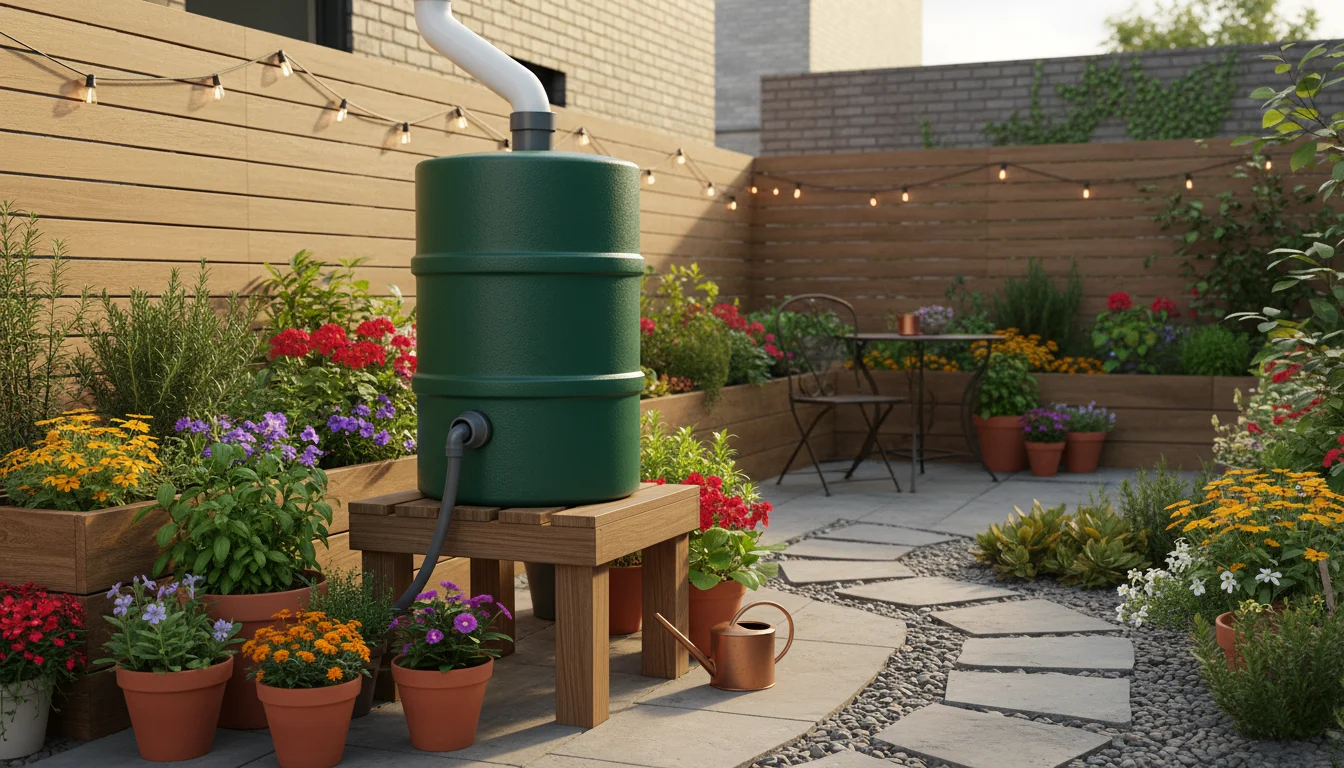
Rain Capture Basics for Urban Settings
Harnessing rainwater is an excellent way to supplement your watering needs and reduce reliance on municipal water, contributing significantly to your eco-friendly garden efforts. For small urban spaces, rain barrels are a practical solution. A simple rain barrel connected to a downspout can collect hundreds of gallons of water during a single rain event.
Steps for Implementing a Rain Barrel:
- Select a Location: Choose a spot near a downspout that is level and stable.
- Prepare the Downspout: You may need to cut your existing downspout and install a diverter kit.
- Elevate the Barrel: Place your rain barrel on a sturdy, elevated stand to allow gravity-fed watering.
- Connect the Overflow: Ensure the barrel has an overflow hose directed away from your foundation to prevent water damage.
- Secure the Lid: A secure lid is essential to prevent mosquito breeding and keep debris out.
Always check local regulations regarding rain barrel installation, as some areas have specific guidelines. Rainwater is free of chlorine and other chemicals found in tap water, making it excellent for your native plants. You collect valuable water and reduce your environmental footprint.
For research-based sustainable gardening guidance, see
EPA WaterSense — Outdoor Water Use.
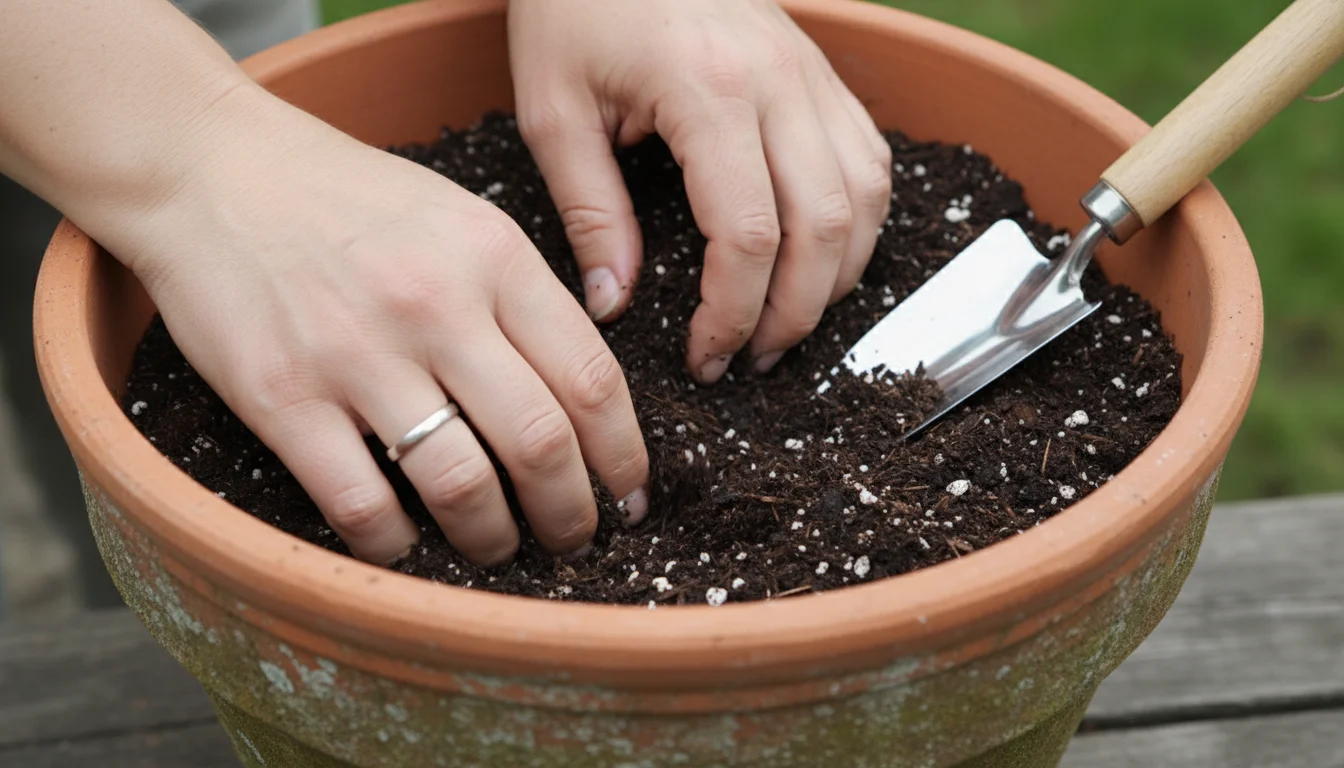
Nurturing Soil Health for Native Containers
Healthy soil forms the bedrock of a thriving native plant garden, especially in containers where soil volume is limited. For urban gardeners aiming for sustainable gardening, focusing on soil health means selecting appropriate potting mixes and understanding how to maintain their vitality over time. You ensure your native plants receive the best possible start and sustained growth.
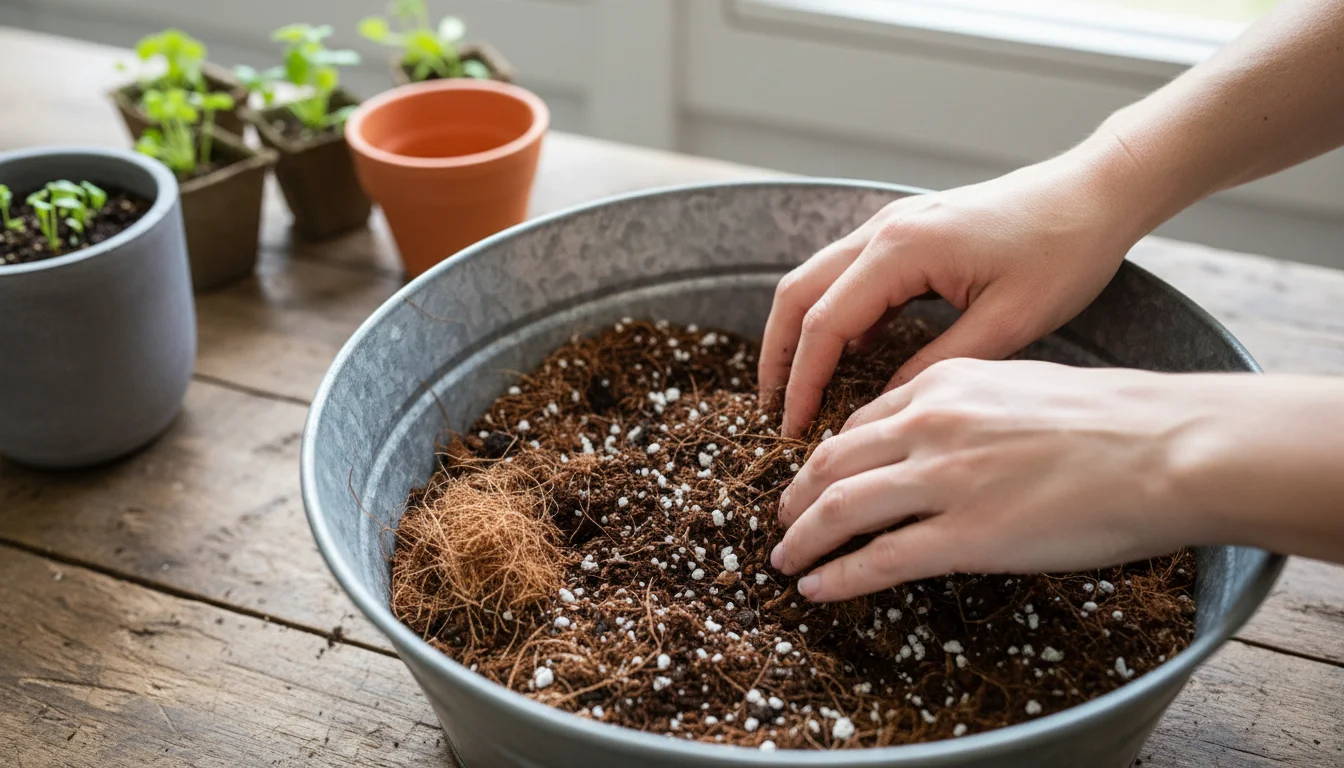
Peat-Free Potting Mixes: A Sustainable Choice
Traditional potting mixes often contain peat moss, a non-renewable resource harvested from peat bogs. Peat bogs are vital carbon sinks, and their destruction releases significant amounts of greenhouse gases. Opting for peat-free potting mixes supports environmental conservation. These sustainable alternatives are widely available and perform just as well, if not better, for many native plants.
Common Ingredients in Peat-Free Mixes:
- Composted Bark or Wood Fiber: Provides structure, aeration, and some nutrients.
- Coconut Coir: A renewable byproduct of coconut harvesting, offering excellent water retention and aeration.
- Perlite or Vermiculite: Improves drainage and aeration, crucial for preventing compacted soil.
- Compost: Adds a rich source of slow-release nutrients and beneficial microbes.
- Worm Castings: Highly effective natural fertilizer and soil enhancer.
When selecting a mix, look for brands specifically labeled “peat-free” or “organic potting mix.” You choose a product that aligns with eco-friendly garden principles.
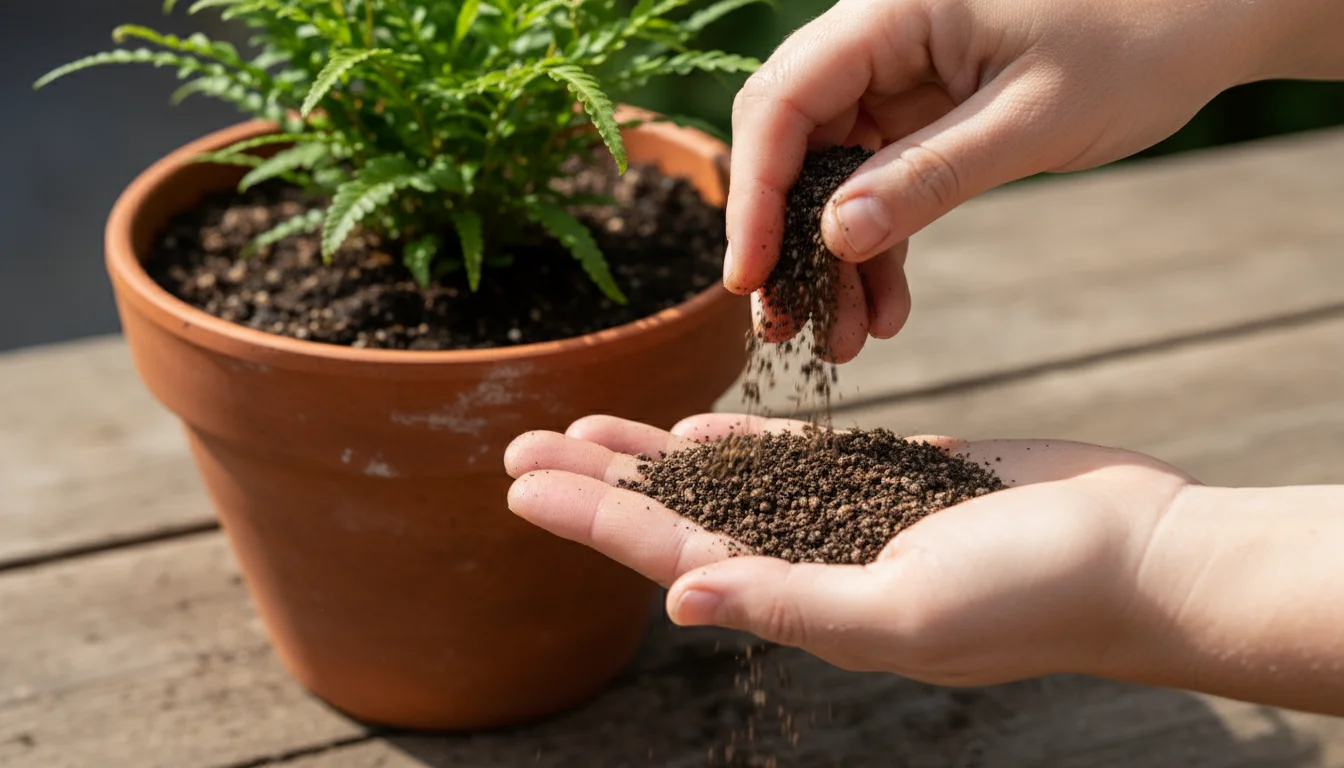
Enhancing Container Soil with Organic Amendments
Over time, container soil can deplete in nutrients and lose its structure. To maintain optimal health for your native plants, regularly incorporate organic amendments. High-quality compost or worm castings are excellent choices. They slowly release nutrients, enhance microbial activity, and improve soil structure. You can top-dress containers with a thin layer of compost annually or mix it into the top few inches of soil when refreshing your pots.
Avoid synthetic, fast-release fertilizers, which can harm beneficial soil microbes and lead to nutrient runoff. Native plants generally adapt well to nutrient-poor soils, and a healthy soil food web provides most of what they need. You support a living soil system, not just a growing medium.
For research-based sustainable gardening guidance, see
USDA NRCS — Soil Health.
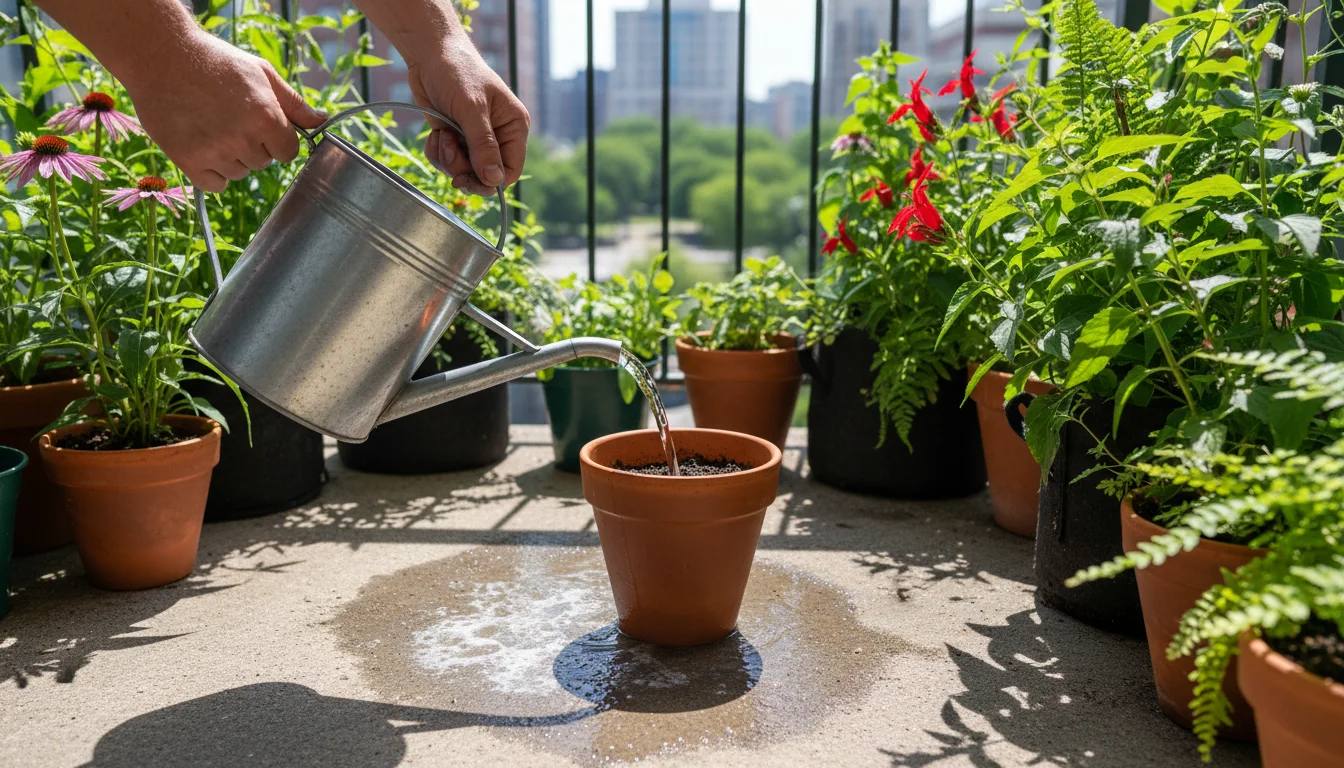
Preventing Salt Buildup
In containers, dissolved minerals from tap water and fertilizers can accumulate, leading to salt buildup. This appears as a white crust on the rim of pots or on the soil surface. High salt concentrations can damage plant roots. To prevent this, periodically flush your containers with plain water. Water thoroughly until water drains freely from the bottom for several minutes. This washes away excess salts. Using collected rainwater, which is naturally soft, also helps minimize salt accumulation. You maintain a balanced environment for your native plants, promoting their long-term health.
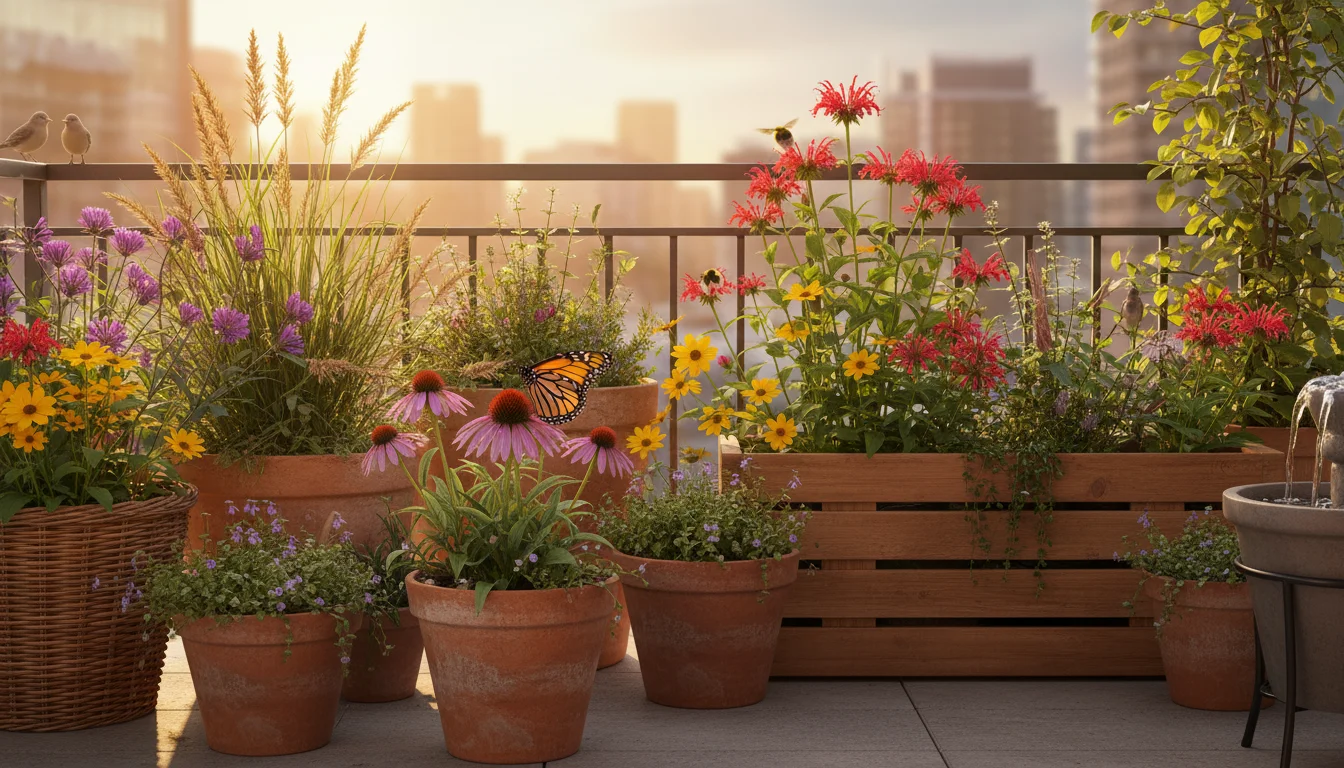
Supporting Pollinators and Wildlife: Plant Selection
The primary reason to incorporate native plants into your urban garden is their unparalleled ability to support local pollinators and wildlife. Your garden transforms from a decorative space into a vital ecological hub. You create a vibrant, living ecosystem in miniature.
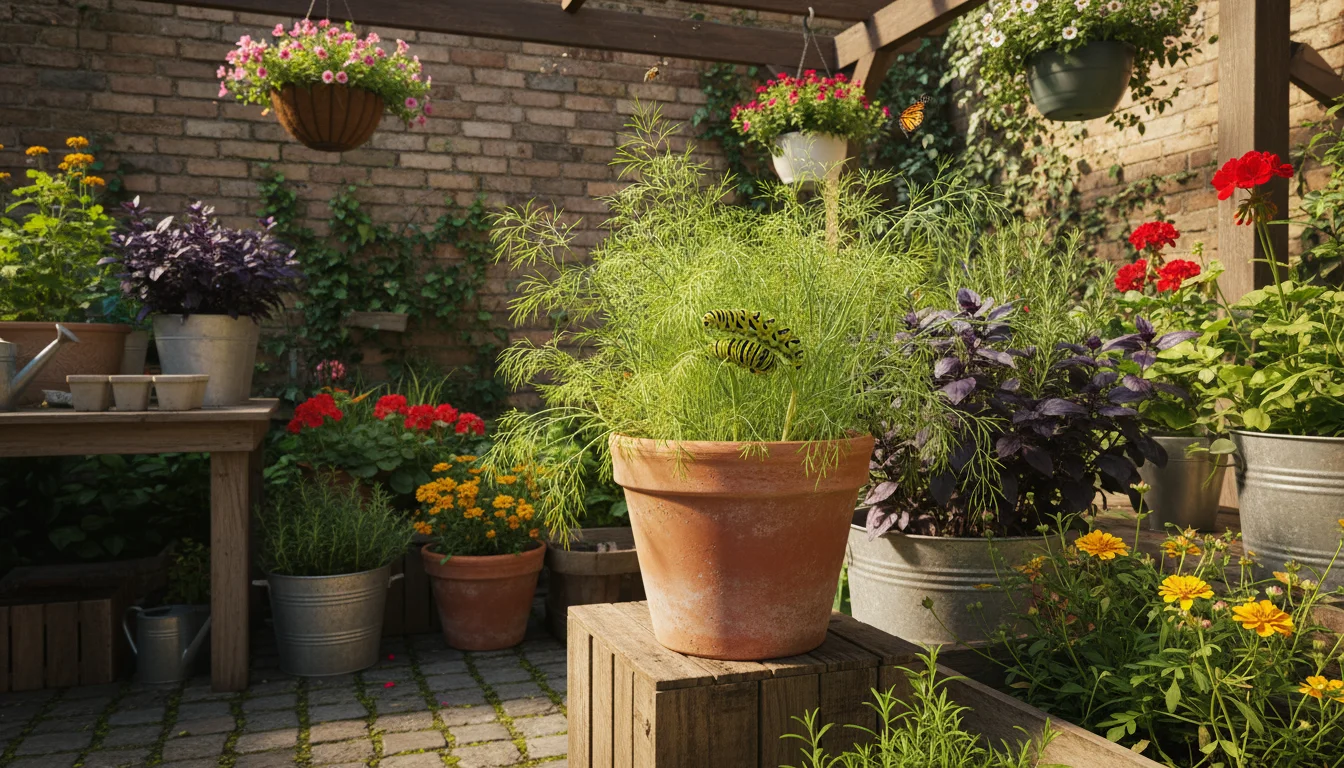
Host Plants: Nurseries for Native Insects
Beyond providing nectar and pollen, many native plants serve as host plants for specific insect larvae, especially butterflies and moths. These plants are crucial for completing the insect life cycle. Without host plants, these insects cannot reproduce. For example, caterpillars of the Black Swallowtail butterfly feed on plants in the carrot family, such as native parsley or dill, while Spicebush Swallowtail caterpillars rely on Spicebush and Sassafras trees. Including these specific host plants ensures you support the full life cycle of these important insects, not just the adult stage. You become a crucial part of local biodiversity conservation.
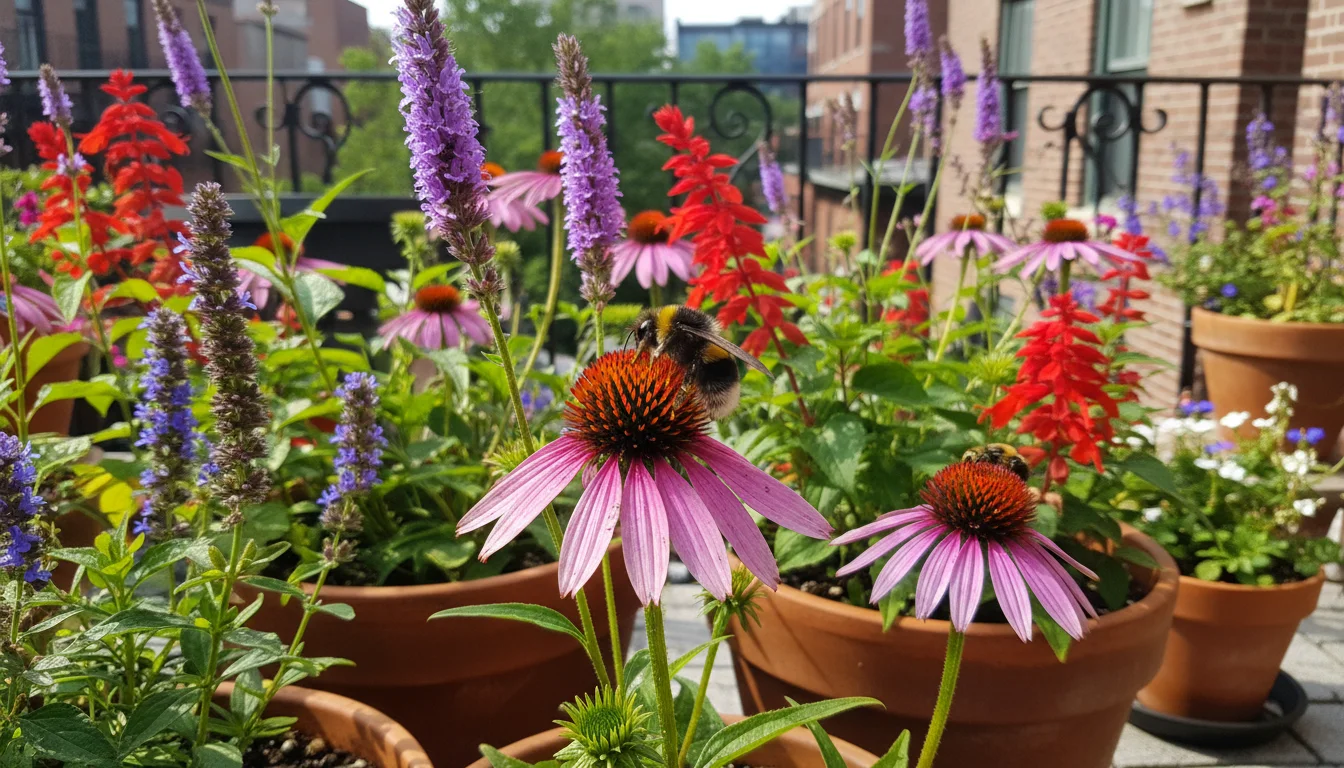
Nectar and Pollen Sources: Fuel for Foragers
Choose native plants that offer abundant nectar and pollen throughout the growing season. A diverse selection ensures a continuous food supply for different types of pollinators. Different flower shapes and colors attract different pollinators: long tubular flowers for hummingbirds, flat composite flowers for bees and flies, and large landing pads for butterflies. You provide a comprehensive menu for all local visitors.
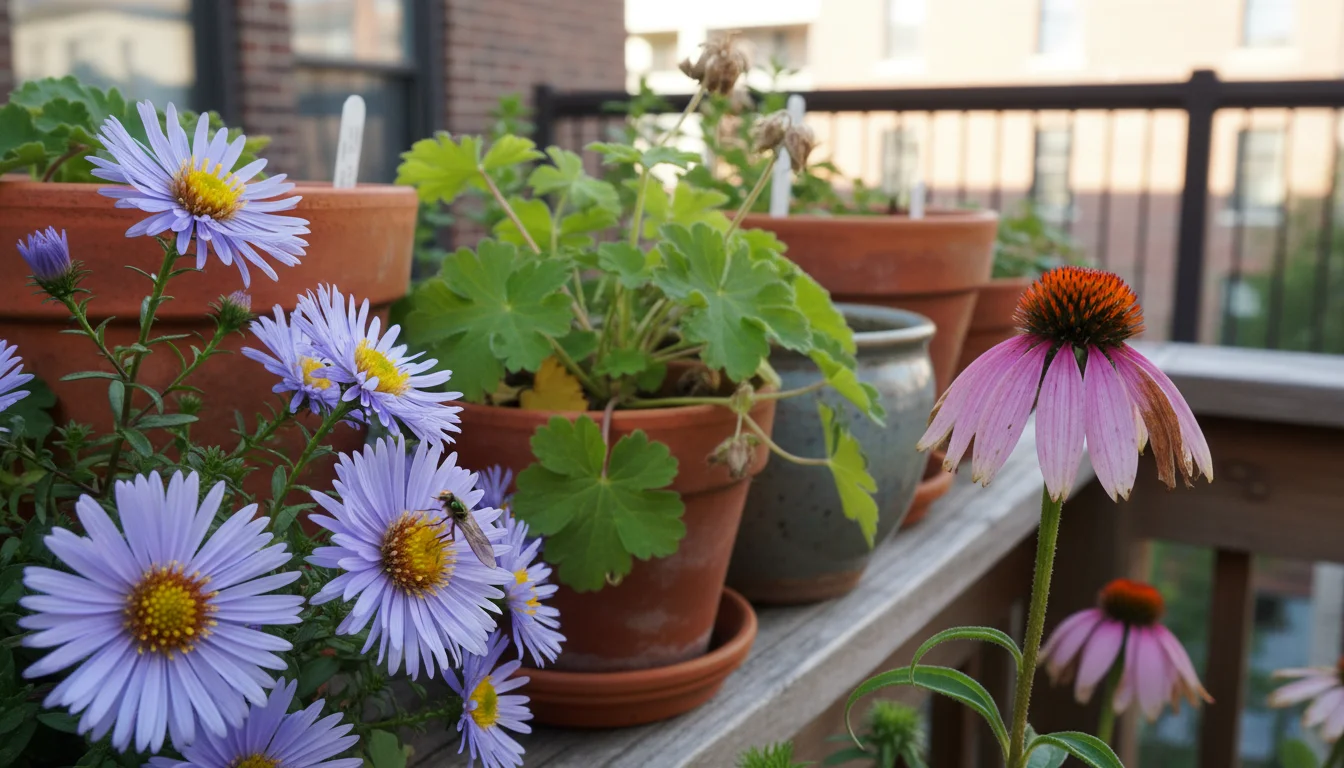
Creating a Continuous Bloom Sequence
Plan your planting to ensure something is always in bloom from early spring through late fall. This continuous sequence provides a steady food source for pollinators throughout their active periods. Early spring blooms like native pussy willow or spring ephemerals provide critical sustenance for emerging queen bees. Mid-summer flowers attract a wide array of insects, while late-season asters and goldenrods offer essential fuel for migrating butterflies and bees preparing for winter. You sustain local wildlife throughout the entire growing season.
Example Native Plants for Pollinator Support (adjust for your region):
| Bloom Season | Example Plants | Attracts | Host Plant For |
|---|---|---|---|
| Early Spring | Wild Geranium (Geranium maculatum), Virginia Bluebells (Mertensia virginica) | Early bees, small butterflies | |
| Mid-Spring | Columbine (Aquilegia canadensis), Bleeding Heart (Dicentra spectabilis) | Bumblebees, hummingbirds | |
| Early Summer | Milkweed (Asclepias tuberosa), Coneflower (Echinacea purpurea) | Bees, butterflies, hummingbirds | Monarch butterflies (milkweed) |
| Mid-Summer | Blazing Star (Liatris spicata), Bee Balm (Monarda spp.) | Bees, butterflies, hummingbirds | |
| Late Summer/Fall | Asters (Symphyotrichum spp.), Goldenrod (Solidago spp.), Ironweed (Vernonia noveboracensis) | Migrating butterflies, late bees |
For more research-based sustainable gardening guidance on this topic, see
Pollinator Partnership — Garden for Pollinators.
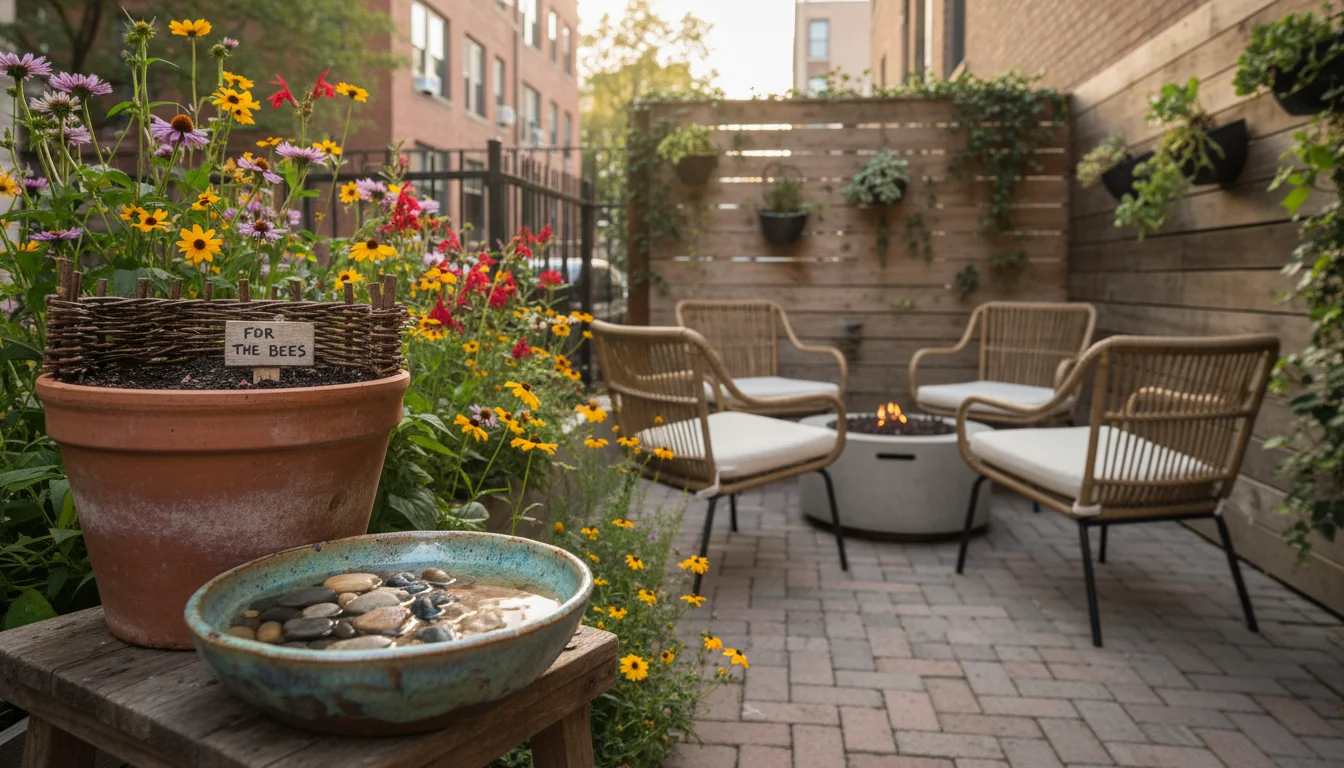
Providing Shelter and Water
Beyond plants, your garden can offer essential shelter and water sources. A shallow bird bath with stones provides a safe drinking and bathing spot for birds and small insects. Leaving some bare soil or a small patch of stems allows ground-nesting bees or overwintering insects a place to reside. Consider a small brush pile or a collection of hollow stems for cavity-nesting bees. You create a truly comprehensive habitat for local wildlife.
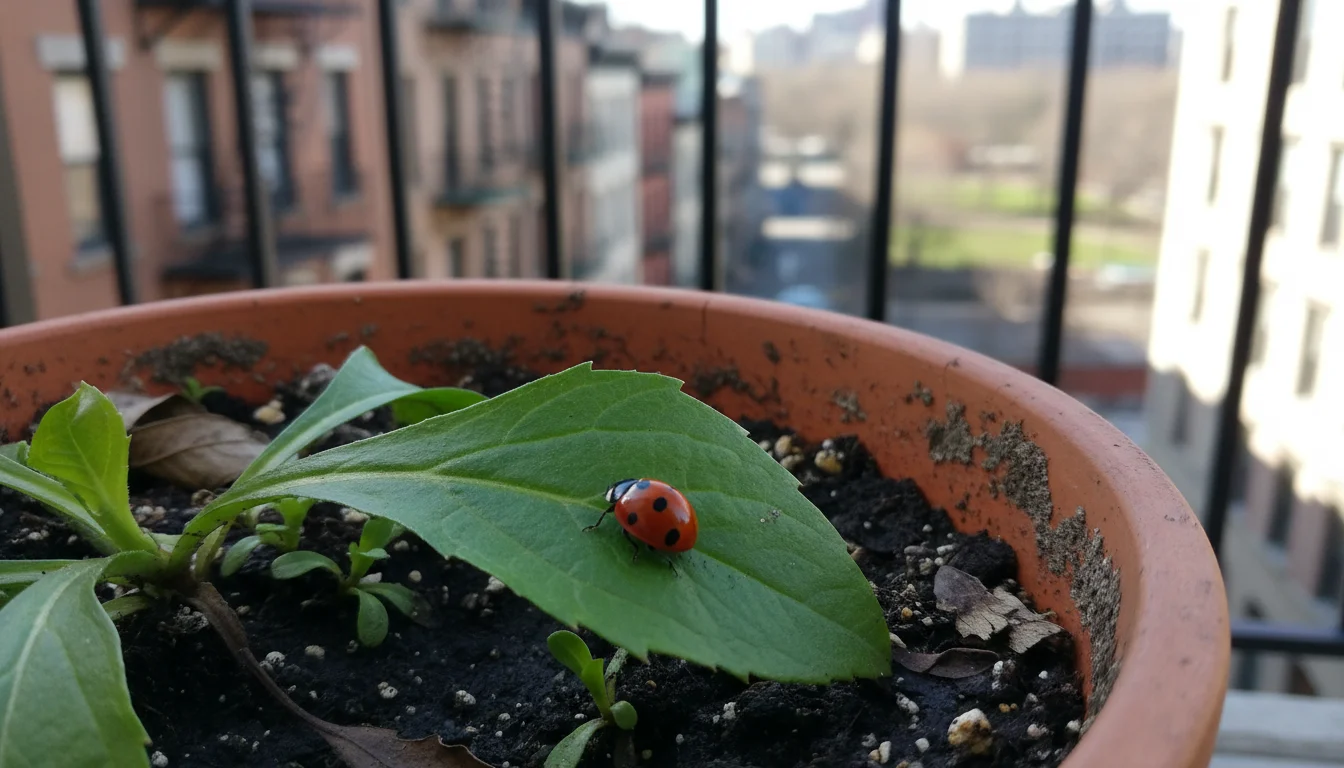
Safe Pest Management in Native Gardens
Embracing native plants in your urban garden naturally reduces pest problems, making your sustainable gardening journey simpler and more rewarding. A healthy native ecosystem inherently includes natural pest controls. You work with nature, not against it, to manage unwanted visitors.
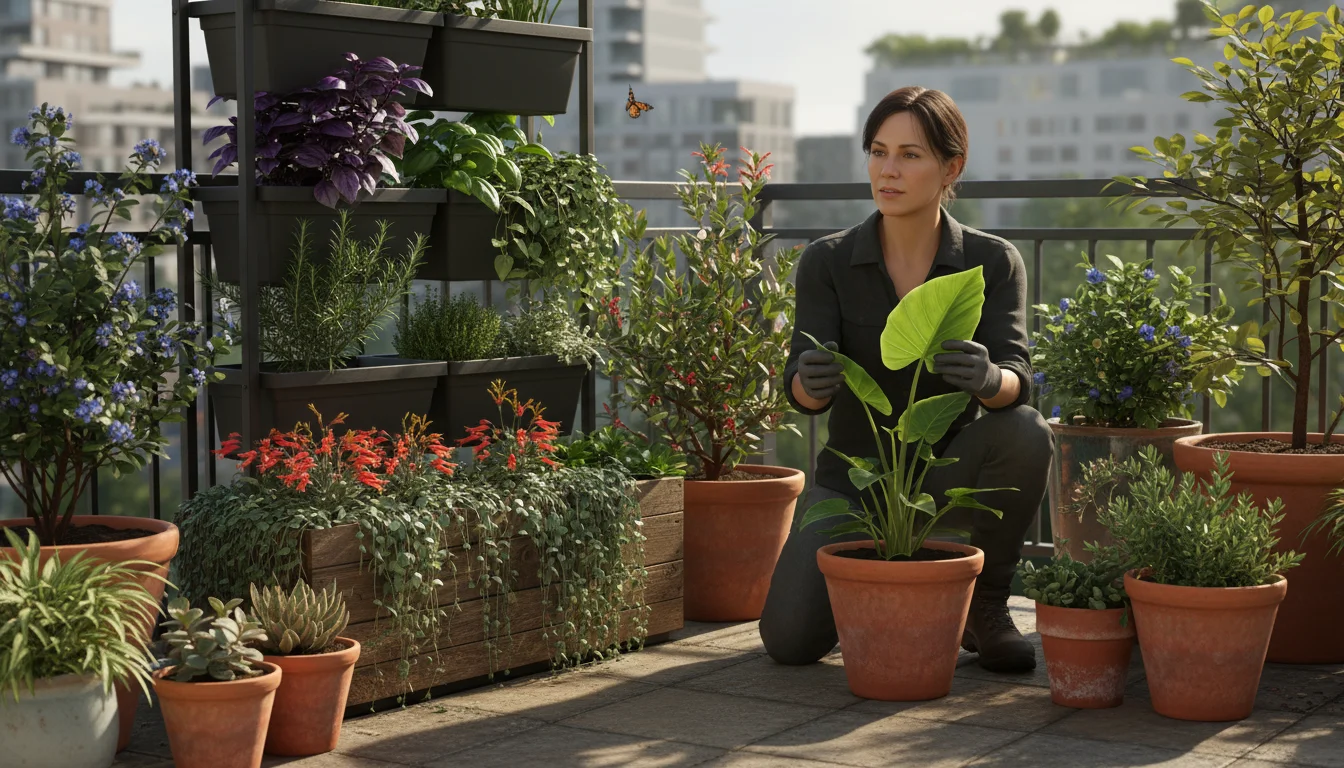
Integrated Pest Management (IPM): Your First Line of Defense
Integrated Pest Management, or IPM, is a holistic approach that prioritizes prevention, monitoring, and non-chemical interventions. It is the gold standard for eco-friendly garden pest control. IPM focuses on creating a balanced environment where pests are kept in check by natural processes.
Prevention: Building a Resilient Garden
- Choose the Right Plants: Healthy native plants, correctly sited, are naturally more resistant to pests and diseases. They are adapted to your local climate and soil conditions, reducing stress that makes them vulnerable.
- Promote Soil Health: As discussed, healthy soil leads to healthy plants. Rich, biologically active soil helps plants fend off pests.
- Encourage Biodiversity: A diverse array of native plants attracts a wide range of beneficial insects. These predators and parasites feed on garden pests, providing natural pest control. Think ladybugs eating aphids, lacewings consuming mealybugs, and parasitic wasps targeting caterpillars.
- Good Sanitation: Remove diseased plant material and fallen leaves promptly to reduce overwintering sites for pests and pathogens.
Monitoring: Early Detection is Key
Regularly inspect your plants for signs of pests. Catching an infestation early makes it much easier to manage. Look for chewed leaves, sticky residues (honeydew), discolored foliage, or the presence of the pests themselves. Pay close attention to the undersides of leaves and new growth, where pests often congregate. You empower yourself to act decisively before small problems become big ones.
Mechanical and Cultural Controls: Hands-On Solutions
When pests appear, start with non-toxic, physical methods:
- Hand-picking: For larger pests like slugs, snails, or some caterpillars, simply pick them off and remove them.
- Strong Water Spray: A jet of water can dislodge aphids, spider mites, and whiteflies from plants. Repeat every few days until the pests are gone.
- Barriers: Use row covers for vegetable gardens to prevent flying insects from laying eggs. Copper tape around containers can deter slugs.
- Pruning: Remove heavily infested branches or leaves to reduce pest populations.
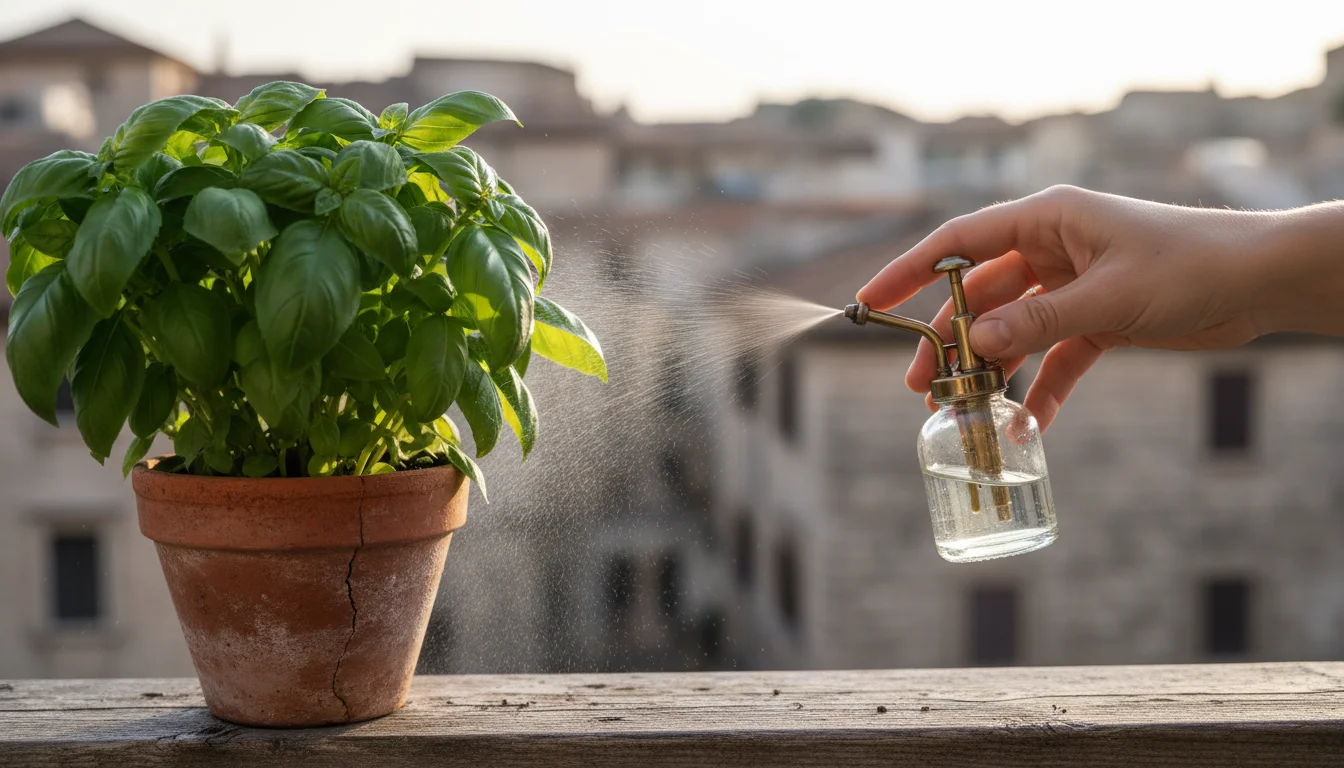
Least-Toxic Options: When You Need More Help
If mechanical controls are insufficient, consider least-toxic options. Always read labels carefully and follow instructions, even for organic products.
- Insecticidal Soaps: Effective against soft-bodied insects like aphids, mealybugs, and spider mites. They work by smothering the pests. Apply in the early morning or late evening to avoid burning foliage and to protect beneficial insects that are less active at these times.
- Horticultural Oils: Similar to insecticidal soaps, these suffocate pests. They can also be used to control some fungal diseases.
- Neem Oil: A botanical insecticide that disrupts insect feeding and growth. It has low toxicity to mammals and birds, but can still harm beneficial insects if applied improperly. Apply judiciously and according to label directions.
Always remember that pesticides, even organic ones, can harm beneficial insects. Use them as a last resort and target applications specifically to affected areas. You protect the delicate balance of your eco-friendly garden ecosystem.
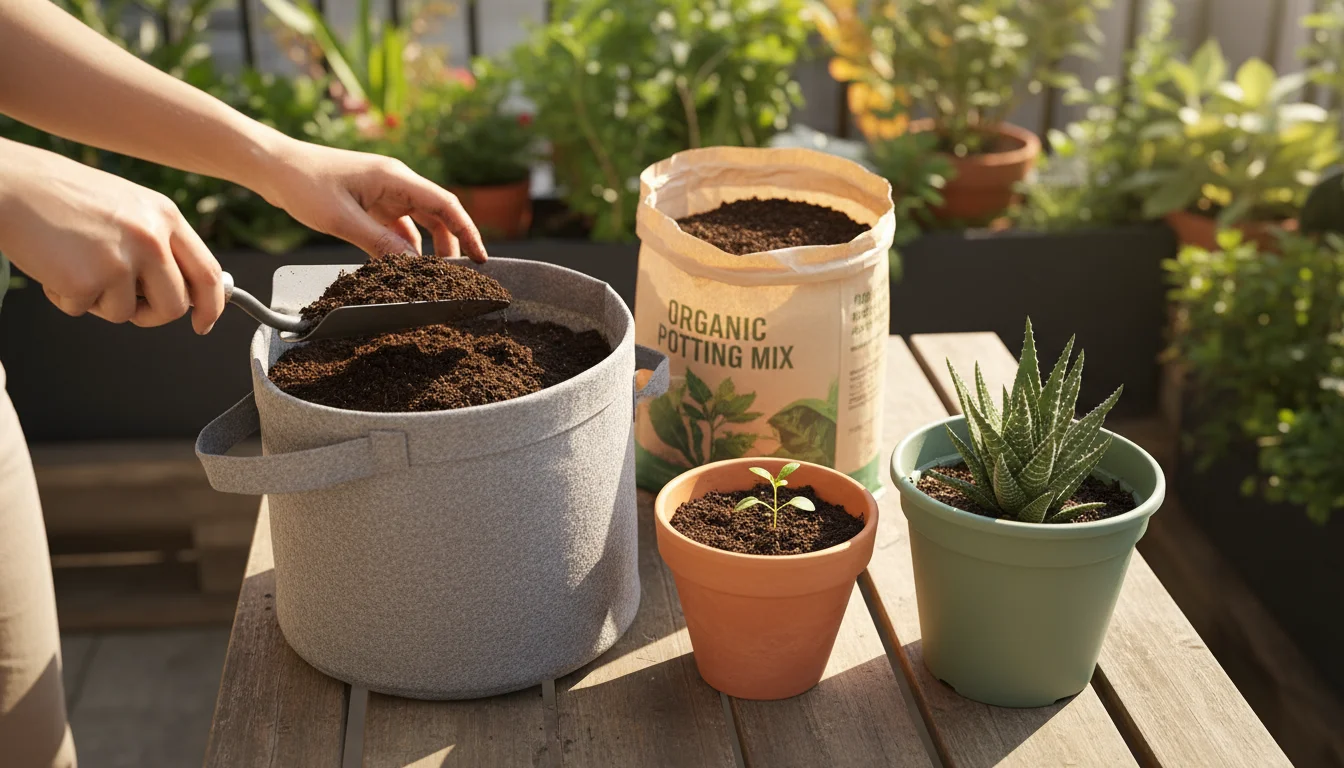
Sustainable Materials for Your Eco-Garden
Every choice you make, from your potting mix to your plant containers, impacts your garden’s overall sustainability. Embracing an eco-friendly garden means consciously selecting materials that minimize environmental harm and maximize resource efficiency. You extend your commitment to sustainable gardening beyond the plants themselves.
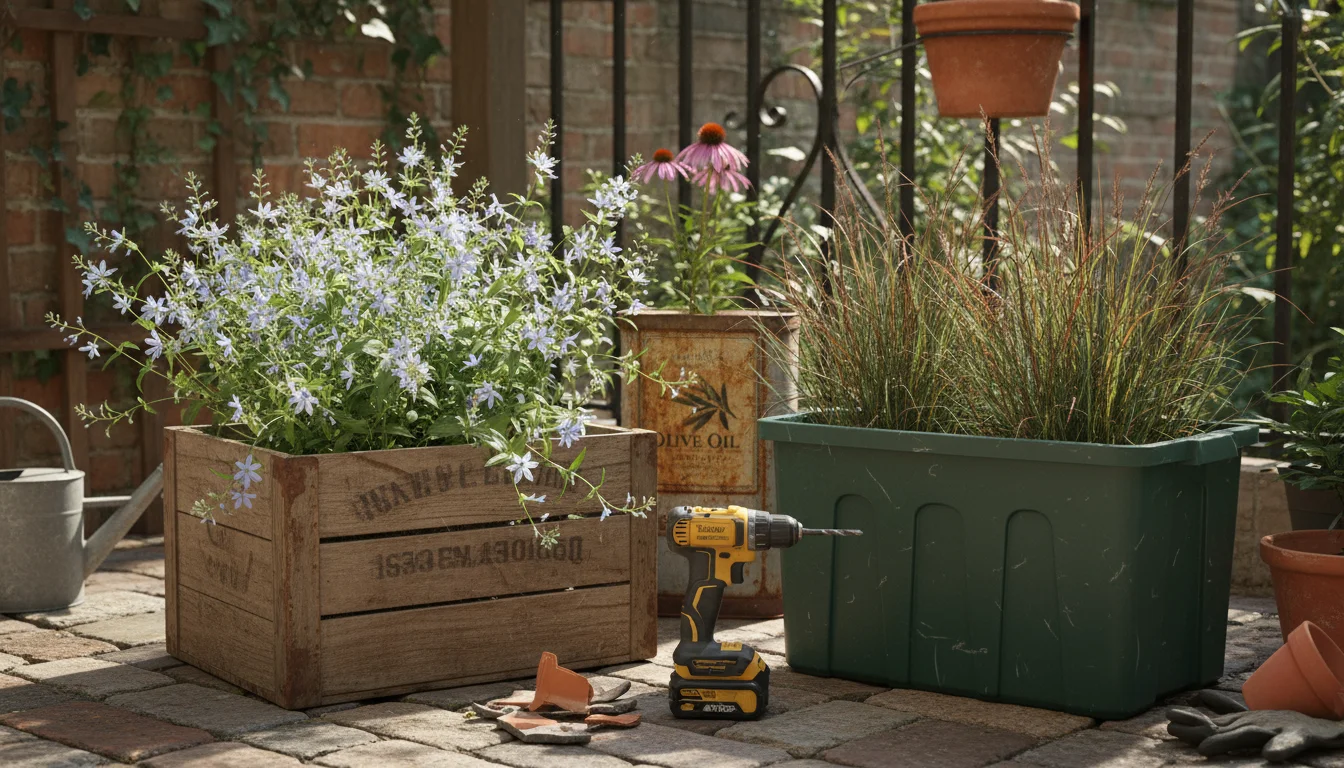
Upcycling Containers: Give New Life to Old Items
One of the easiest ways to reduce waste in your urban garden is to upcycle everyday items into planters. Look around your home for objects that can be repurposed. Old tires, plastic storage bins, metal buckets, wooden crates, and even large food containers (like olive oil tins or coffee cans) can make excellent, unique planters. Ensure anything you use has adequate drainage holes drilled into the bottom to prevent waterlogging, which can be detrimental to your native plants.
When using repurposed materials, consider their safety. Avoid containers that held toxic chemicals. For plastic containers, choose food-grade plastics if you plan to grow edibles, though for native ornamentals, a wider range of plastics is acceptable. You reduce waste, save money, and add a unique, personal touch to your garden.
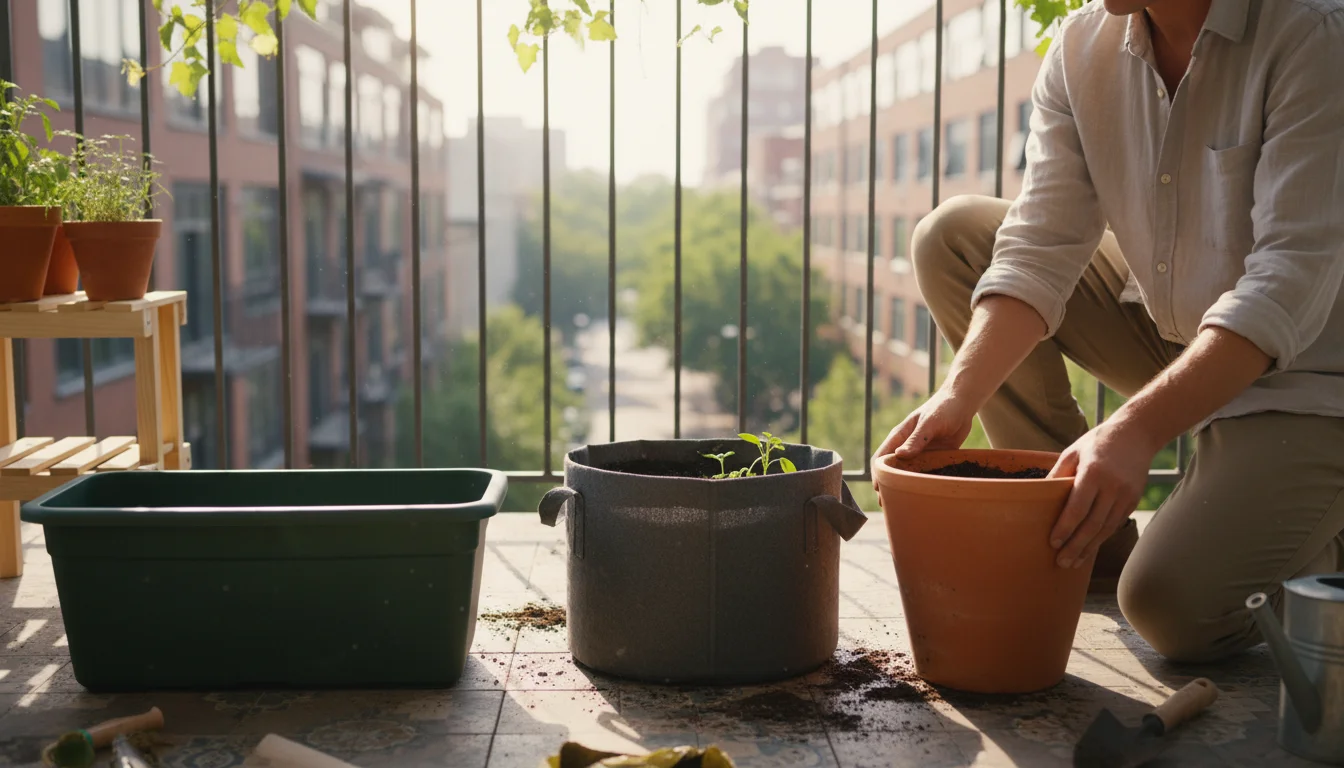
Choosing Sustainable New Containers
If you purchase new containers, prioritize sustainable options. Look for pots made from:
- Recycled Plastic: Many manufacturers now produce planters from post-consumer recycled plastic. This diverts waste from landfills and reduces demand for virgin plastic.
- FSC-Certified Wood: If using wooden planters or raised beds, ensure the wood is certified by the Forest Stewardship Council (FSC). This guarantees the wood comes from responsibly managed forests.
- Terracotta or Ceramic: While production has an energy footprint, these materials are durable and natural. Glazed ceramic pots retain moisture well, making them suitable for many native plants.
- Fabric Grow Bags: Made from breathable, recycled fabric, these are lightweight, promote air pruning of roots, and are reusable. They are particularly good for temporary setups or if you move your garden frequently.
Avoid single-use plastic pots where possible. When you do acquire plants in them, clean and reuse them for seed starting or future propagation, or find a local recycling program that accepts them. You make conscious choices that support environmental responsibility.
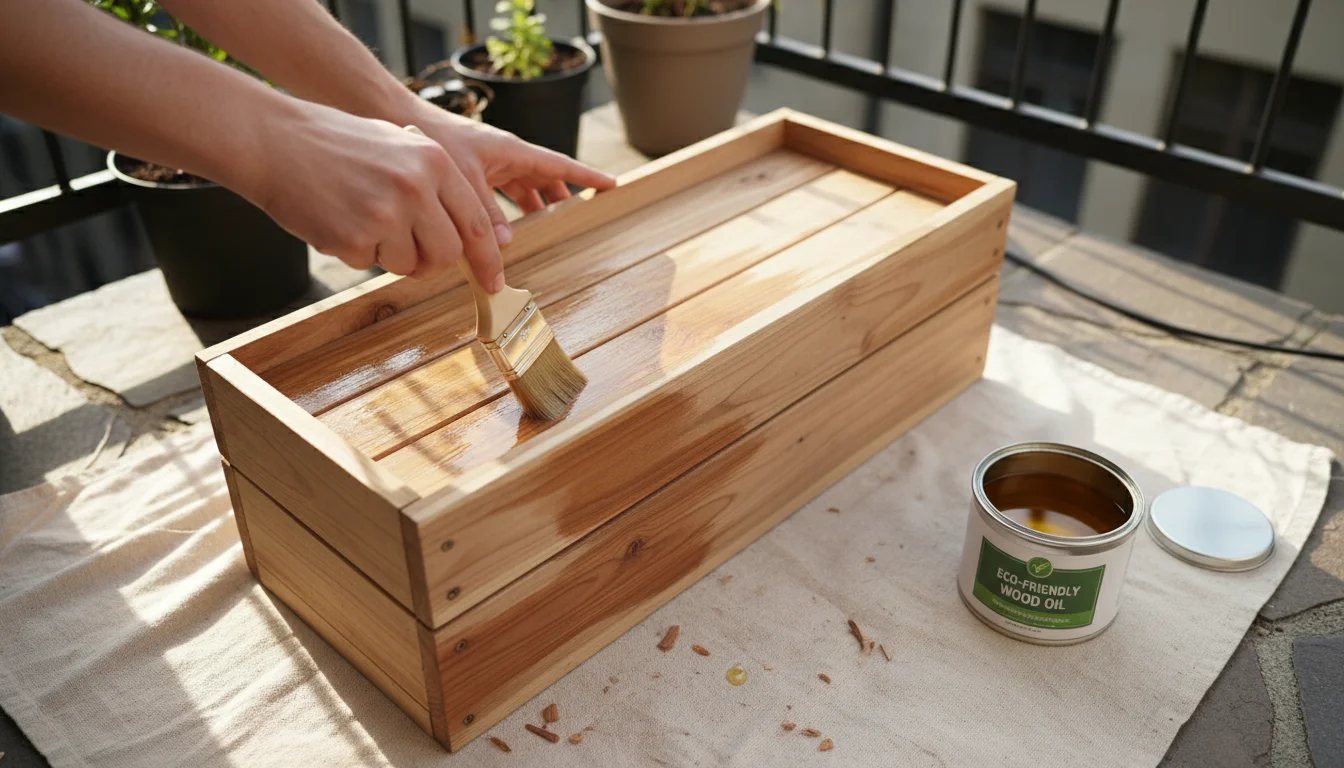
Non-Toxic Finishes and Treatments
If you build or refinish garden structures, use non-toxic or low-VOC (volatile organic compound) paints, stains, and sealants. This protects your plants, the local ecosystem, and your own health. For wooden items, consider natural oils or paints specifically designed for outdoor use with minimal environmental impact. You avoid introducing harmful chemicals into your eco-friendly garden environment.
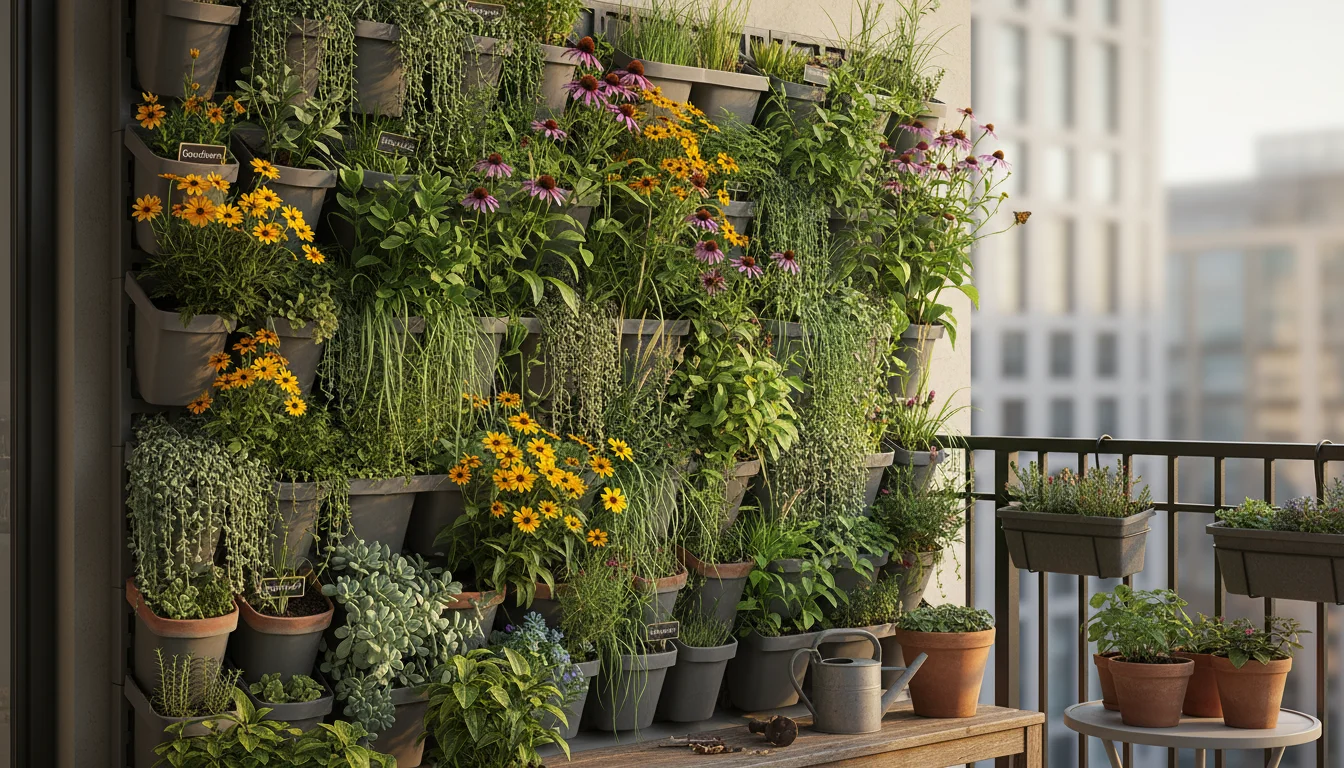
Frequently Asked Questions
What if my urban space is mostly shade? Can I still grow native plants?
Absolutely. Many native plants thrive in shaded conditions. Research native plants specific to your ecoregion that naturally grow in woodland understories. Examples include native ferns, wild ginger, foamflower, and various native sedges. You will find a surprising diversity of beautiful shade-loving options for your eco-friendly garden.
How do I know if a plant is truly native to my specific area?
The best way to confirm local nativity is to consult your state’s native plant society, a local university extension office, or a reputable native plant nursery. Many online databases also allow you to filter by state and ecoregion. Always prioritize plants listed as native to your specific county or ecoregion over broader “native to the continent” labels. You ensure your choices truly support local ecosystems.
Are native plants safe for pets and children?
Many native plants are perfectly safe, but some can be toxic if ingested. It is always wise to research the specific plants you choose, especially if you have curious pets or young children. Websites like the ASPCA provide comprehensive lists of toxic and non-toxic plants. When in doubt, prioritize plants known to be safe or place potentially toxic ones out of reach. You create a safe and enjoyable space for everyone.
Can I start native plants from seed in containers?
Yes, many native plants grow well from seed in containers. Some native seeds require a period of “cold stratification” (exposure to cold, moist conditions) to germinate, mimicking natural winter conditions. You can achieve this by placing seeds in moist potting mix in a refrigerator for a few weeks or by planting them outdoors in containers in late fall for natural stratification over winter. You enjoy the rewarding process of growing your own native plants.
For research-based sustainable gardening guidance, see
Pollinator Partnership — Garden for Pollinators, EPA WaterSense — Outdoor Water Use and USDA NRCS — Soil Health.
Disclaimer: This article is for informational purposes only and is not a substitute for professional advice. Check local regulations before installing rain capture, using greywater, or composting food scraps outdoors.
